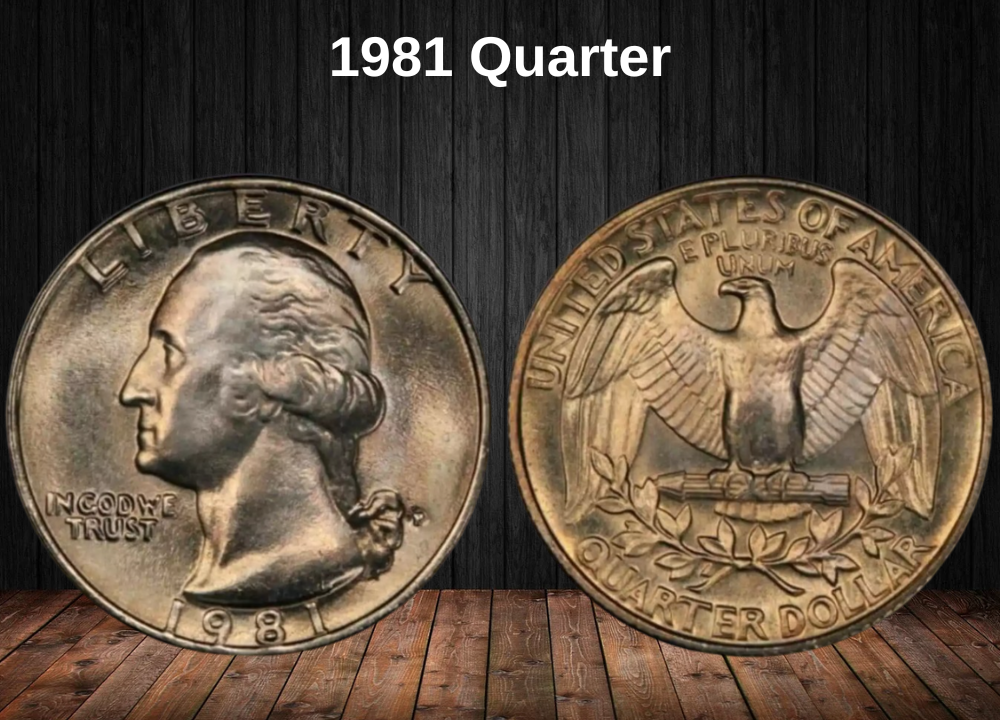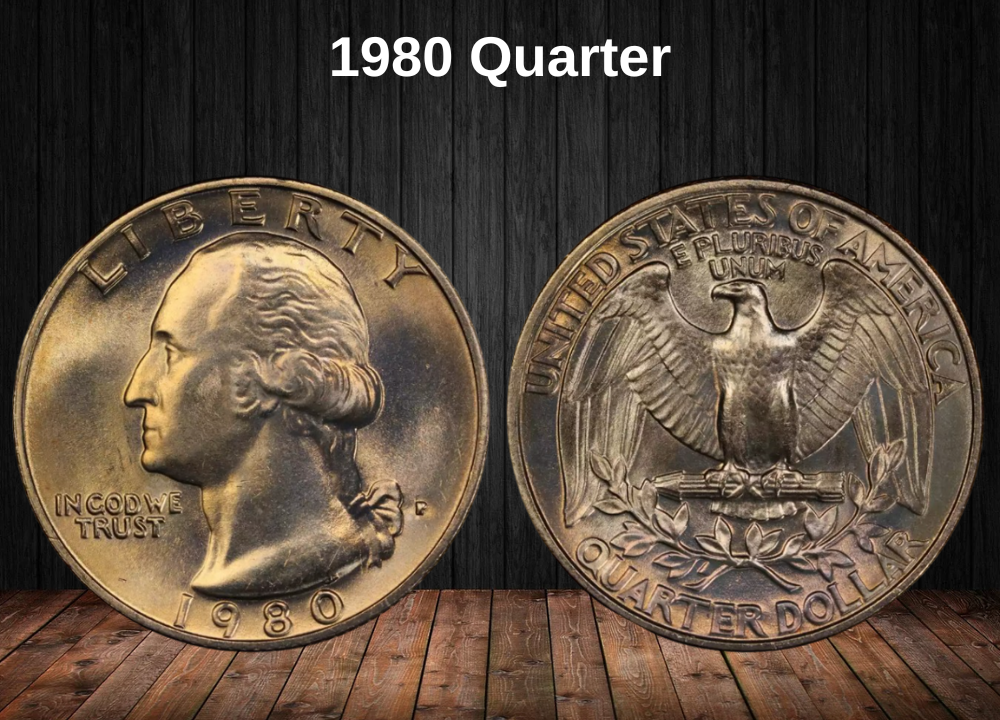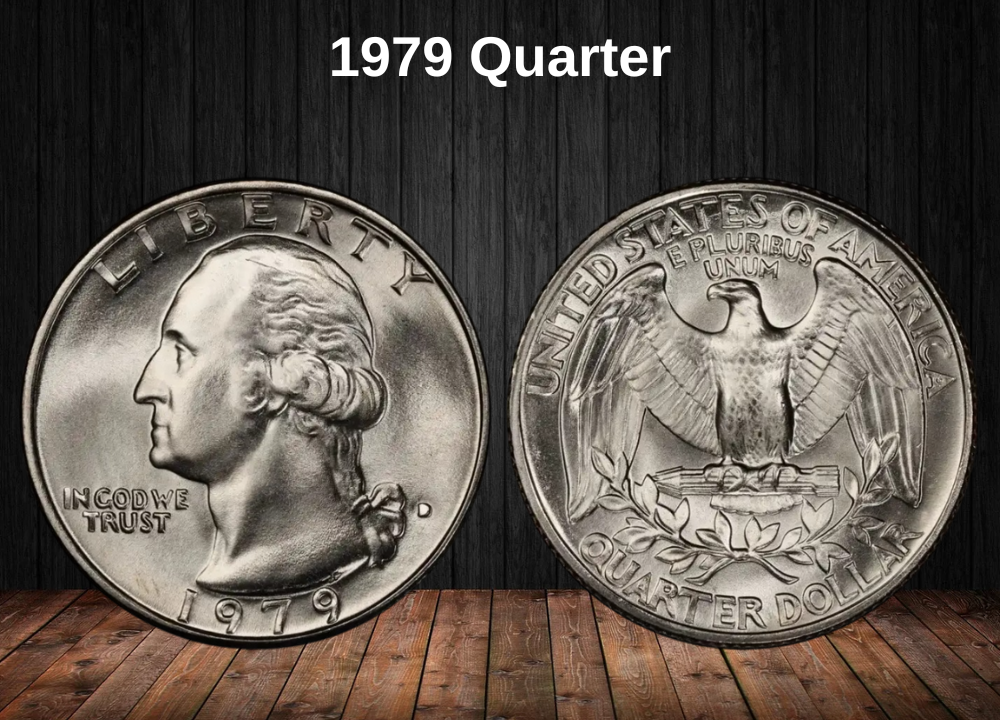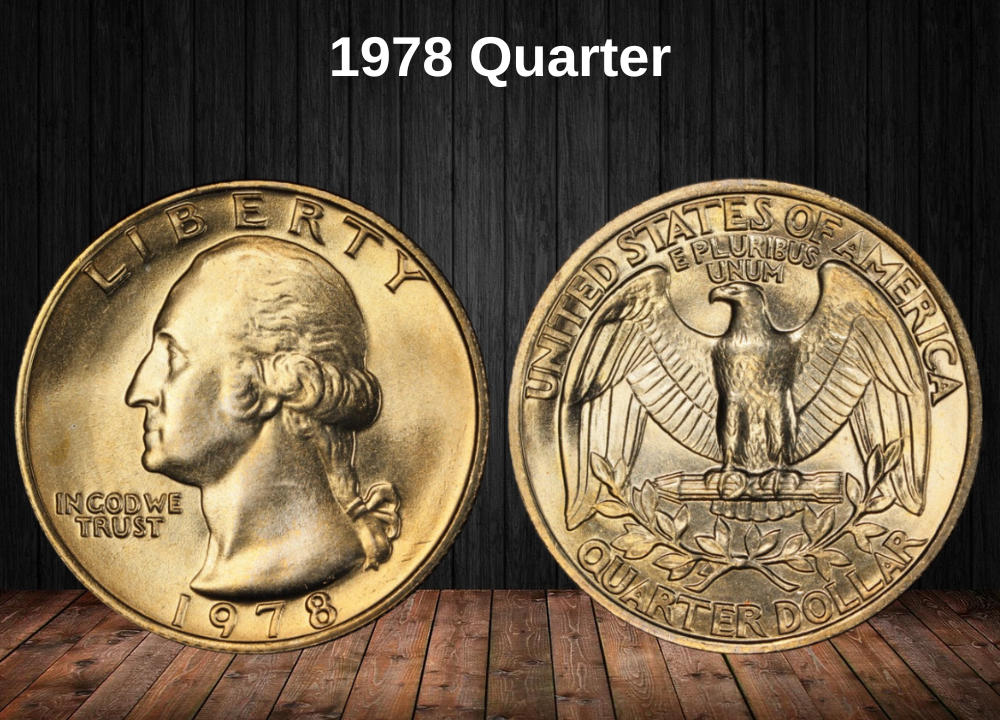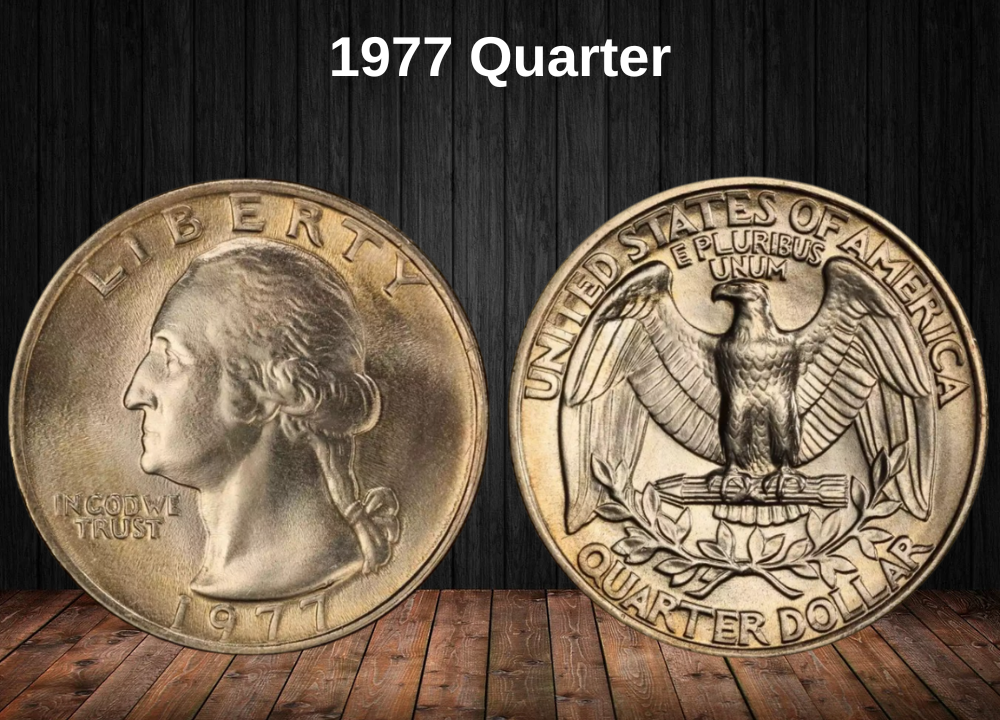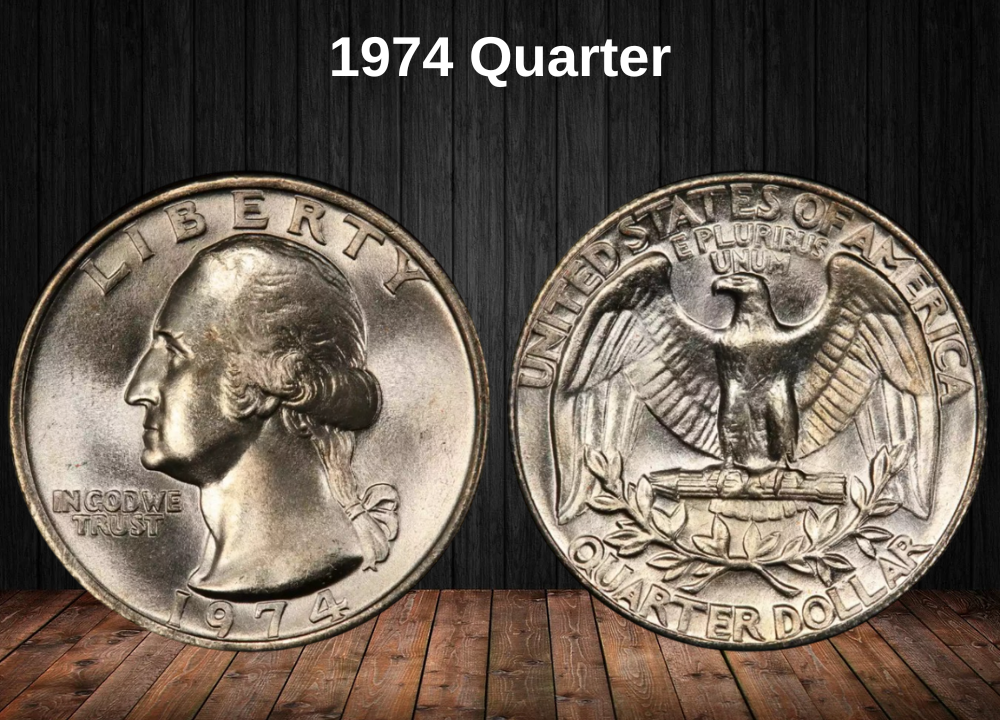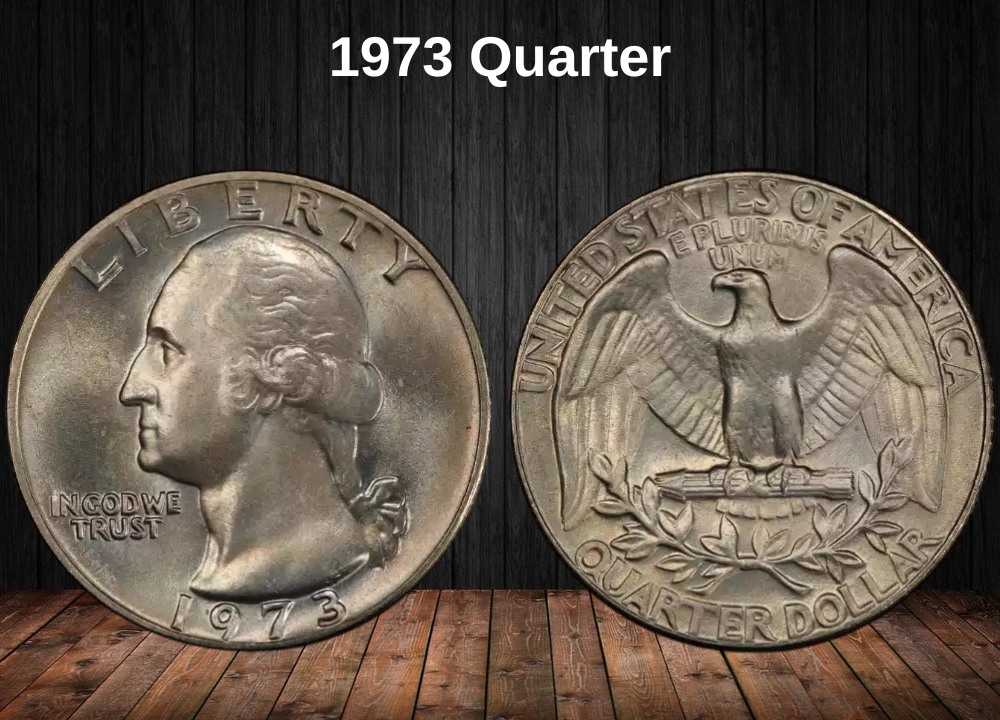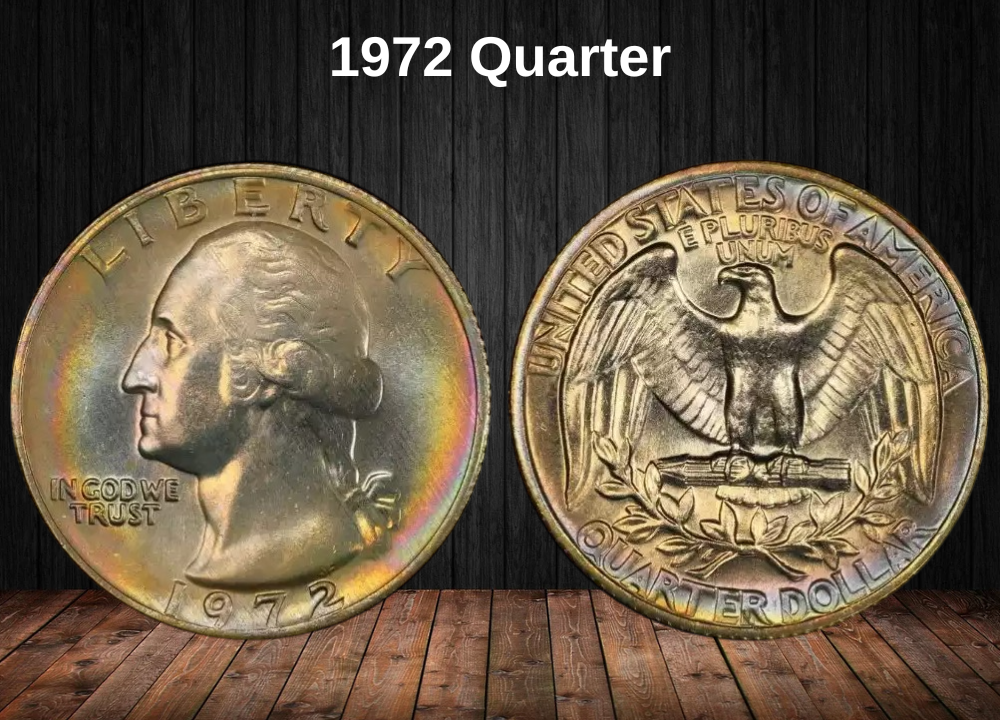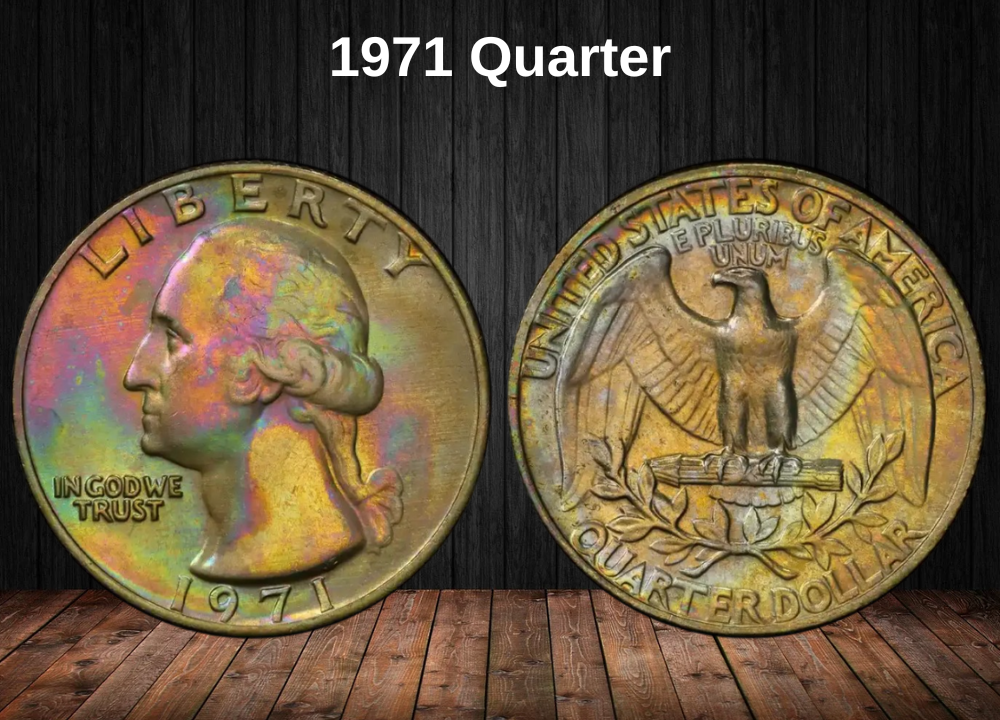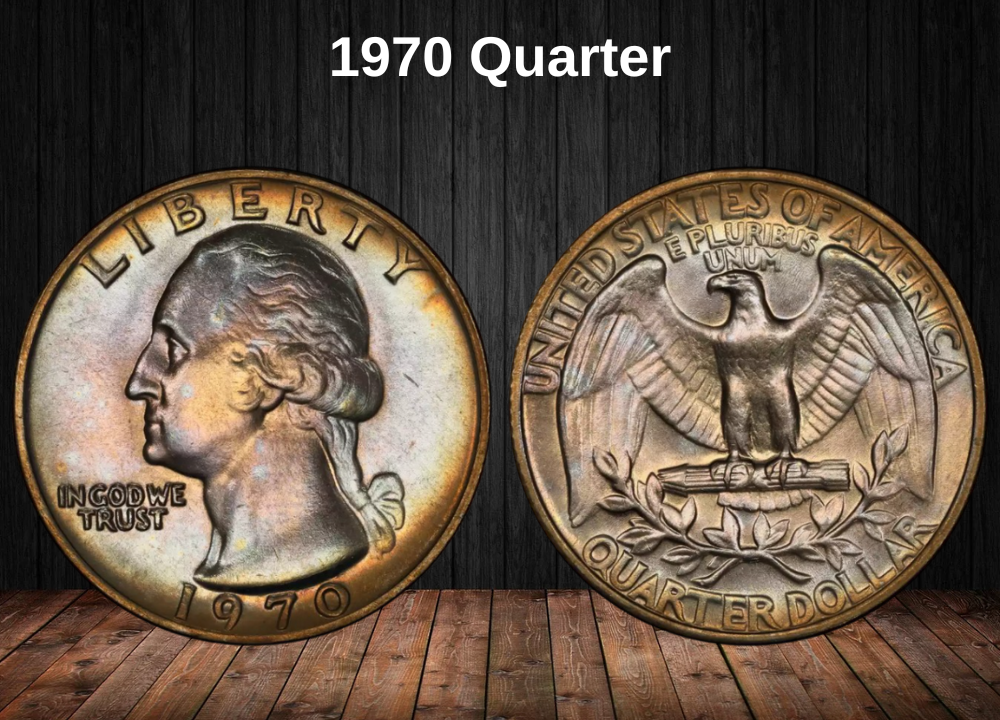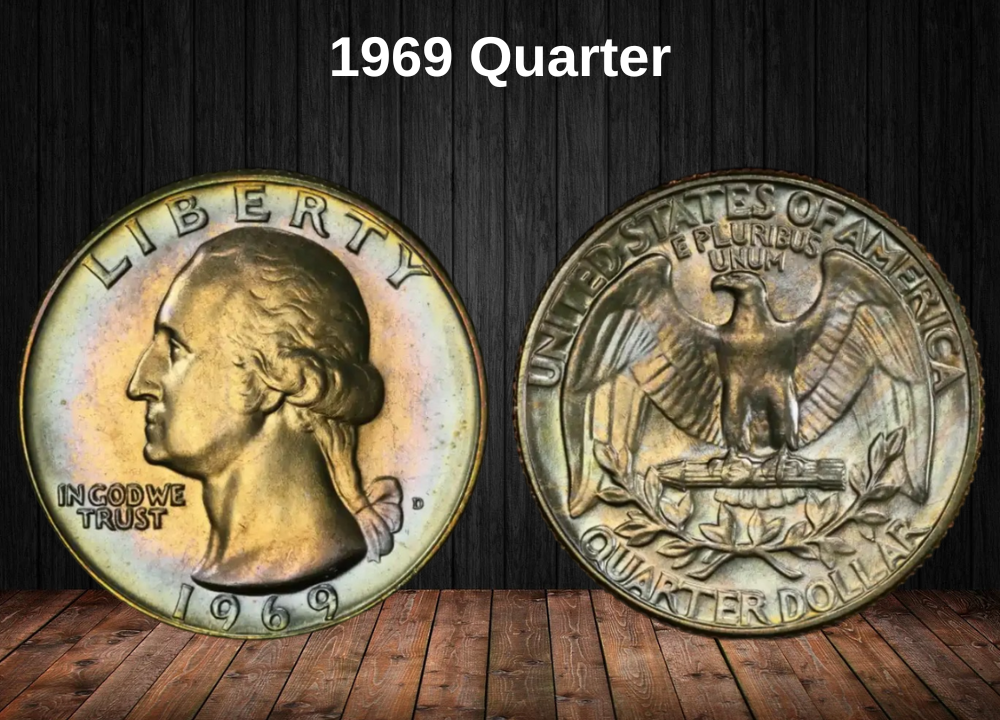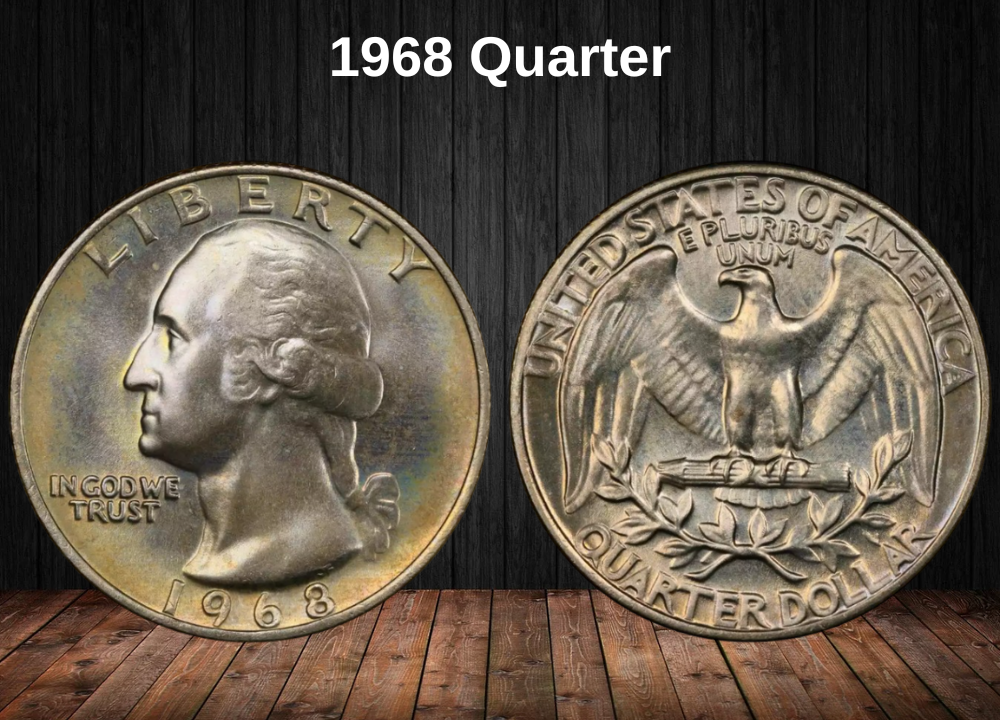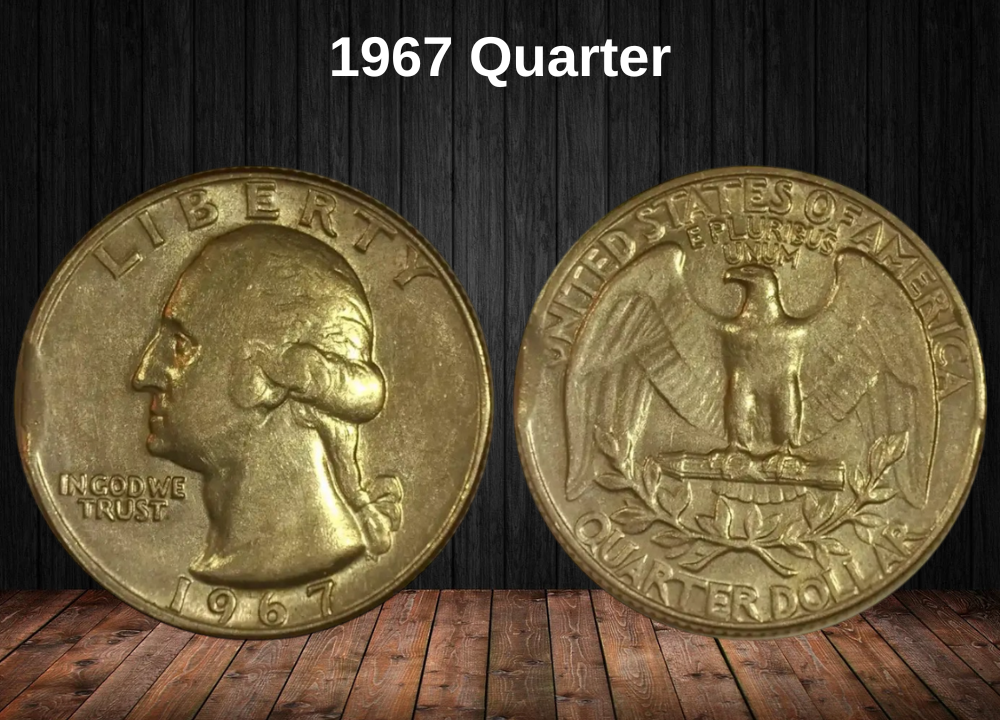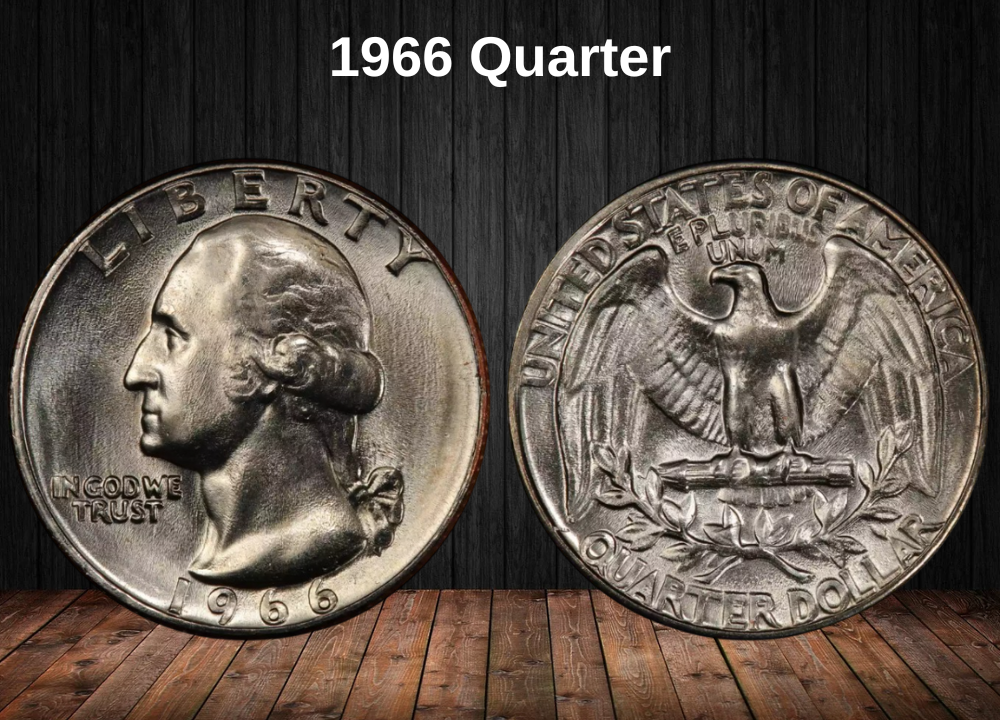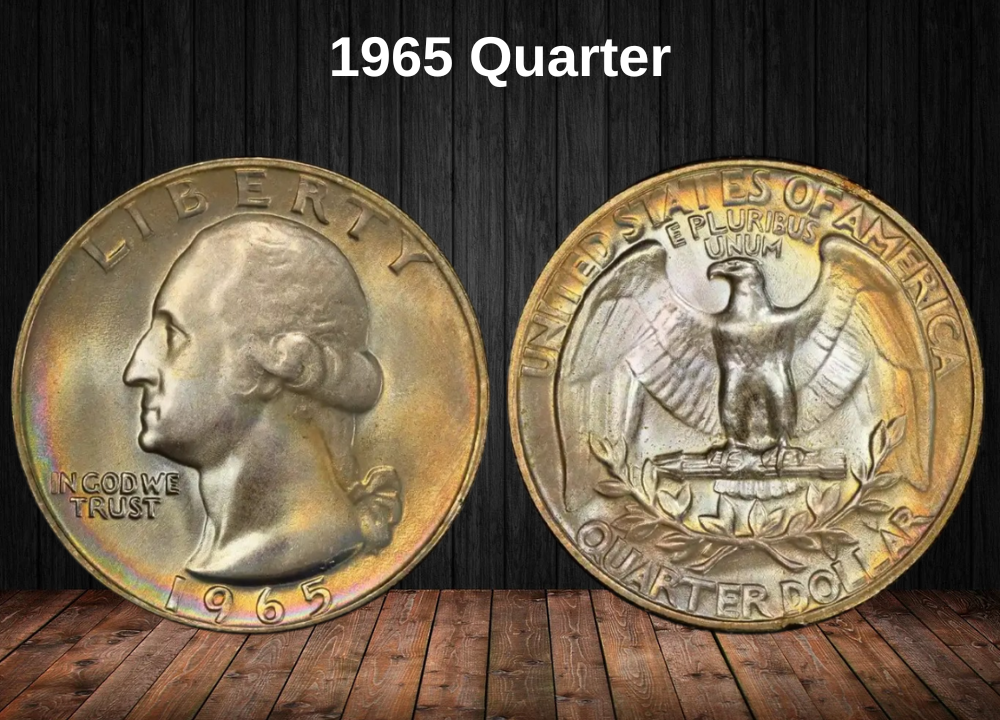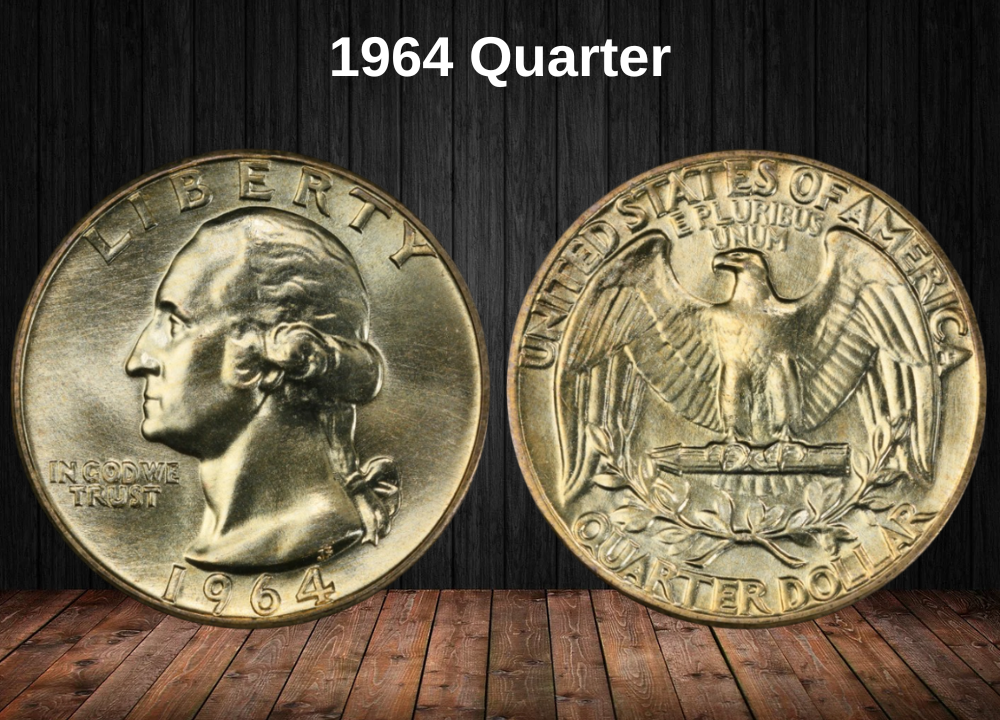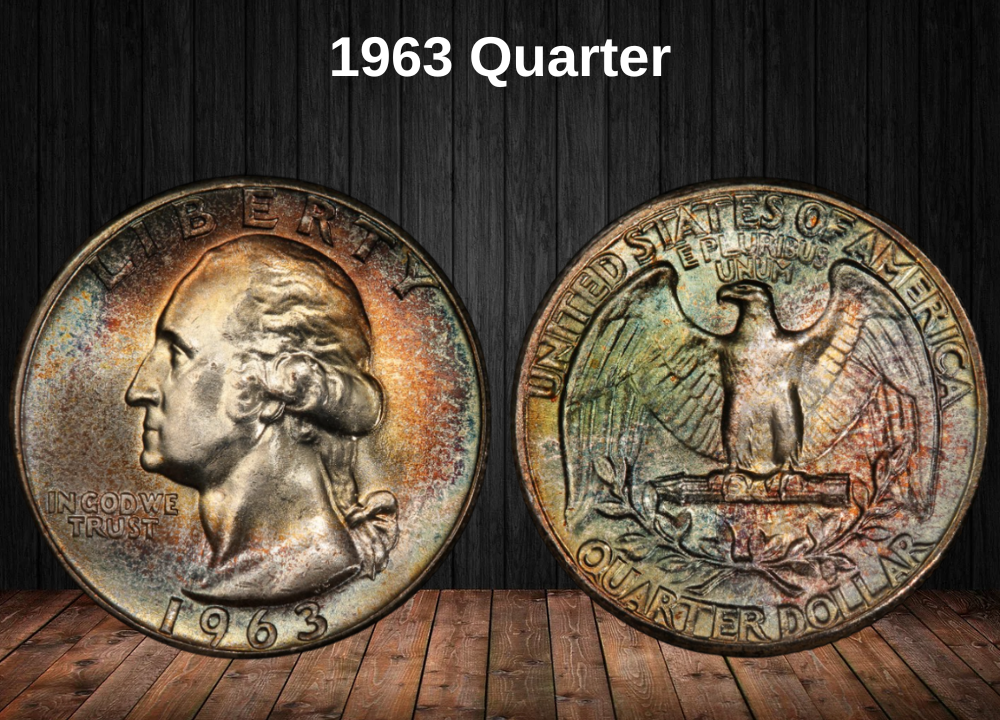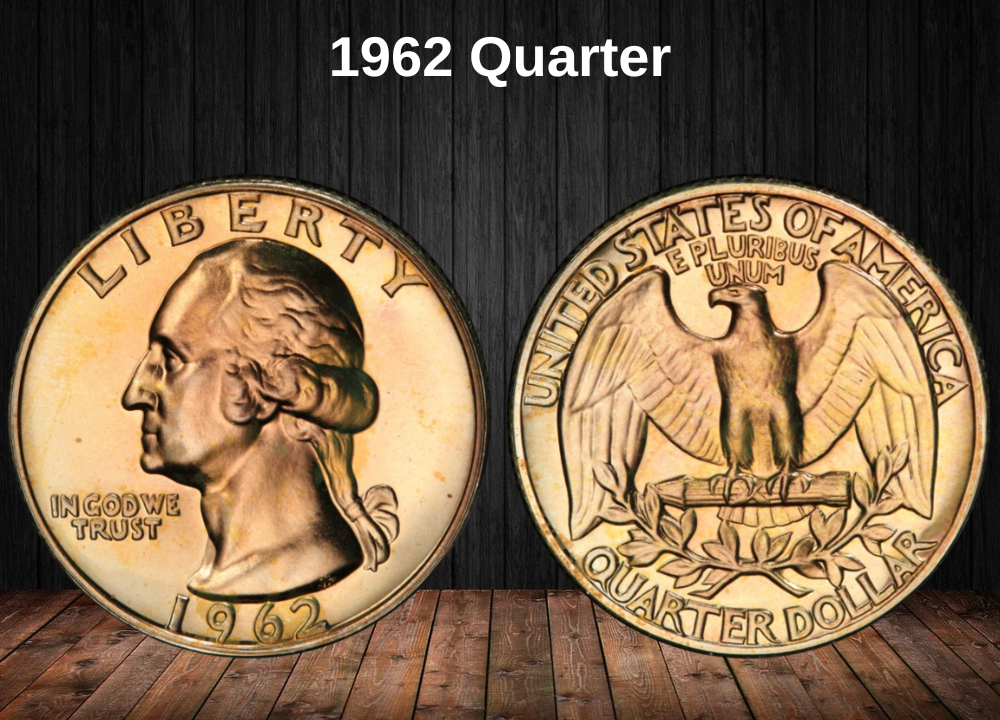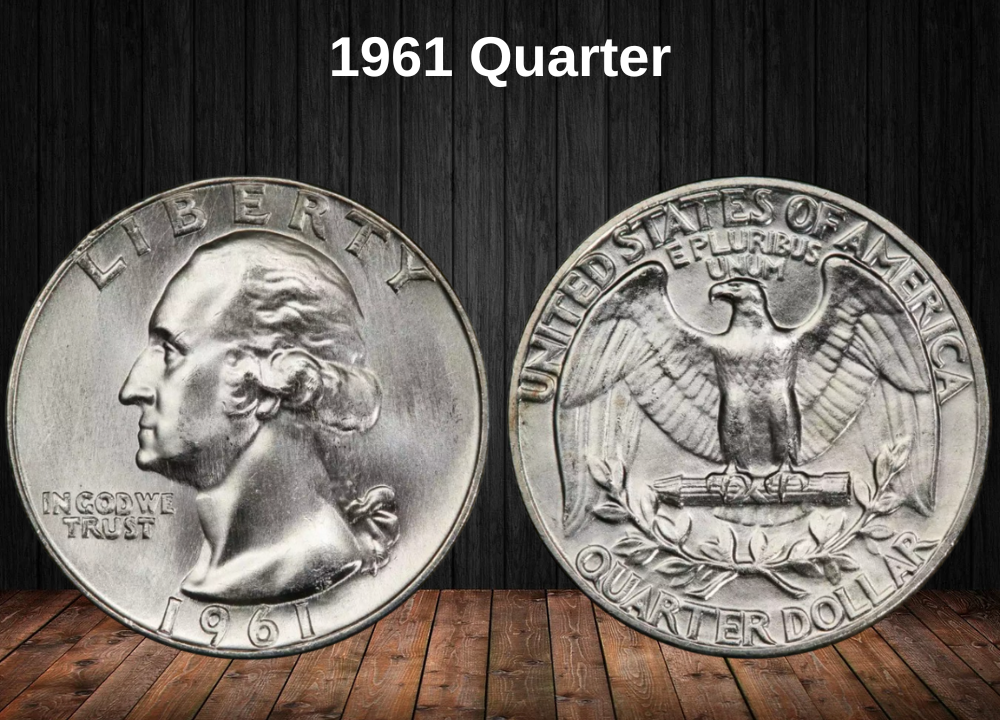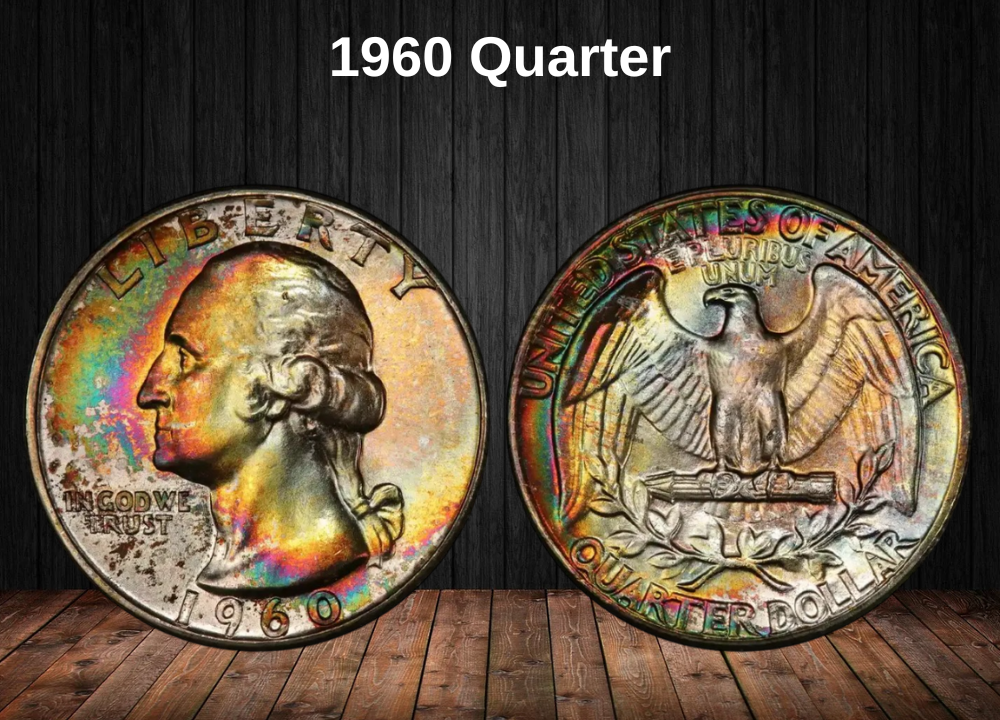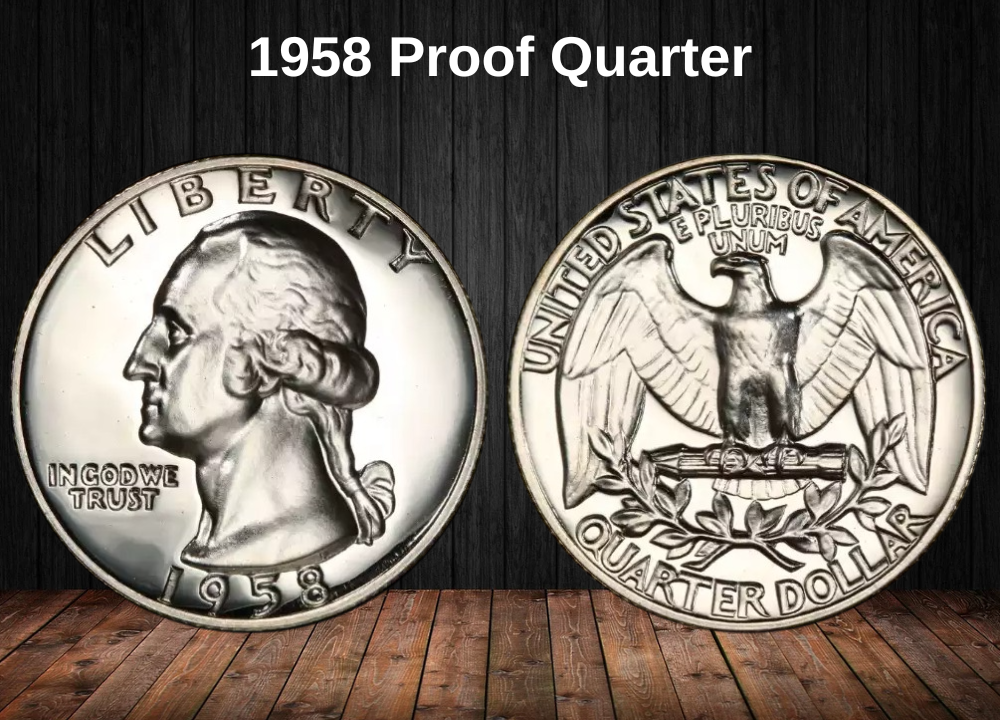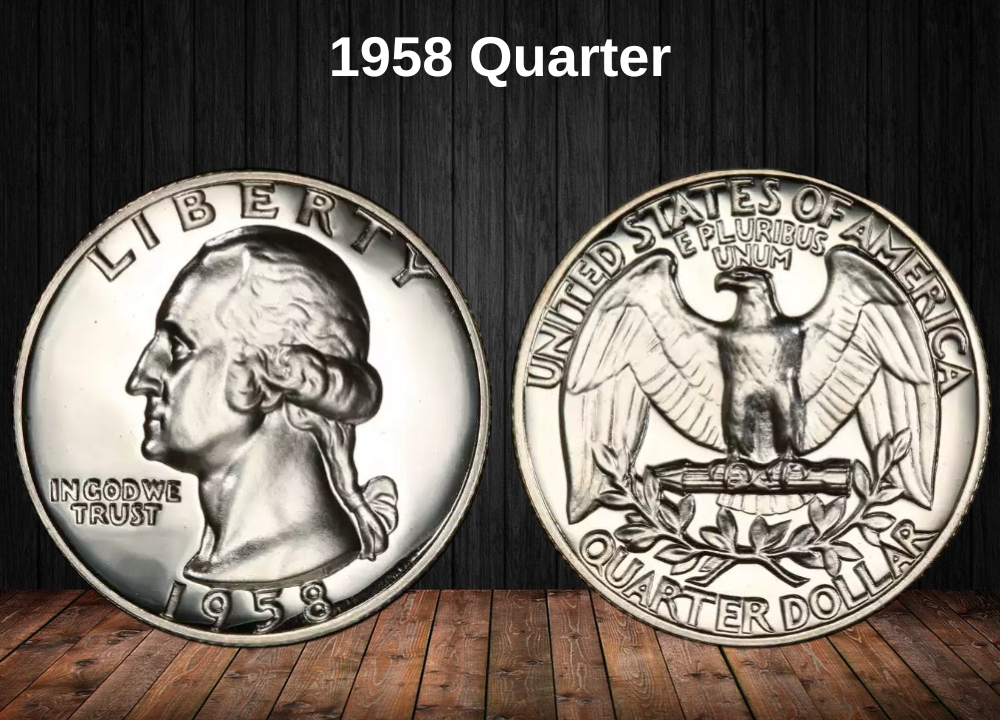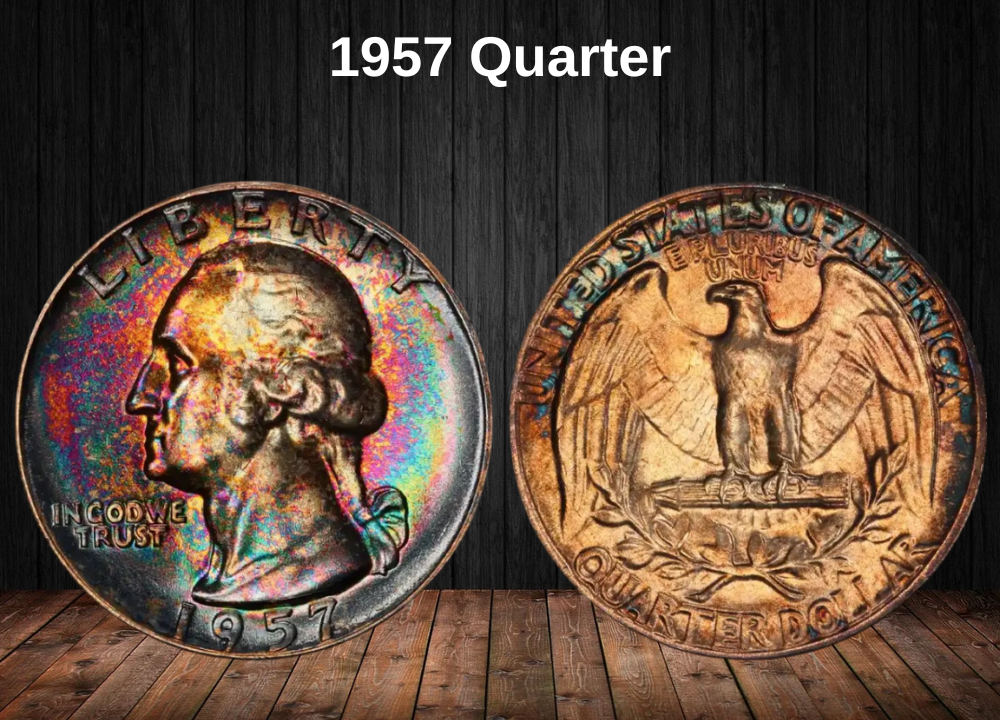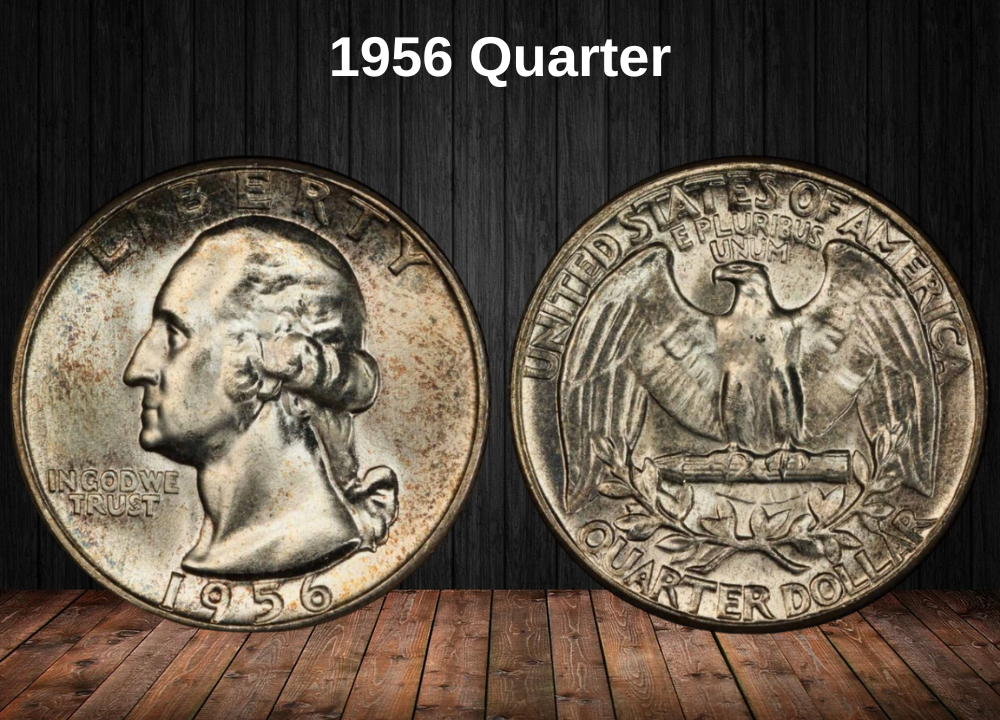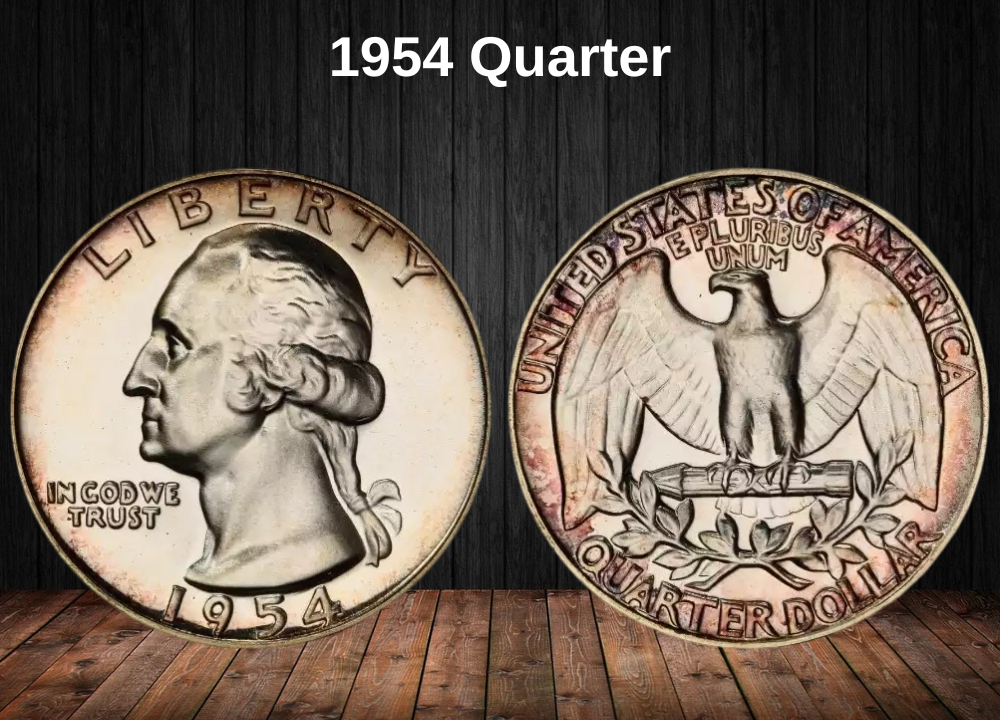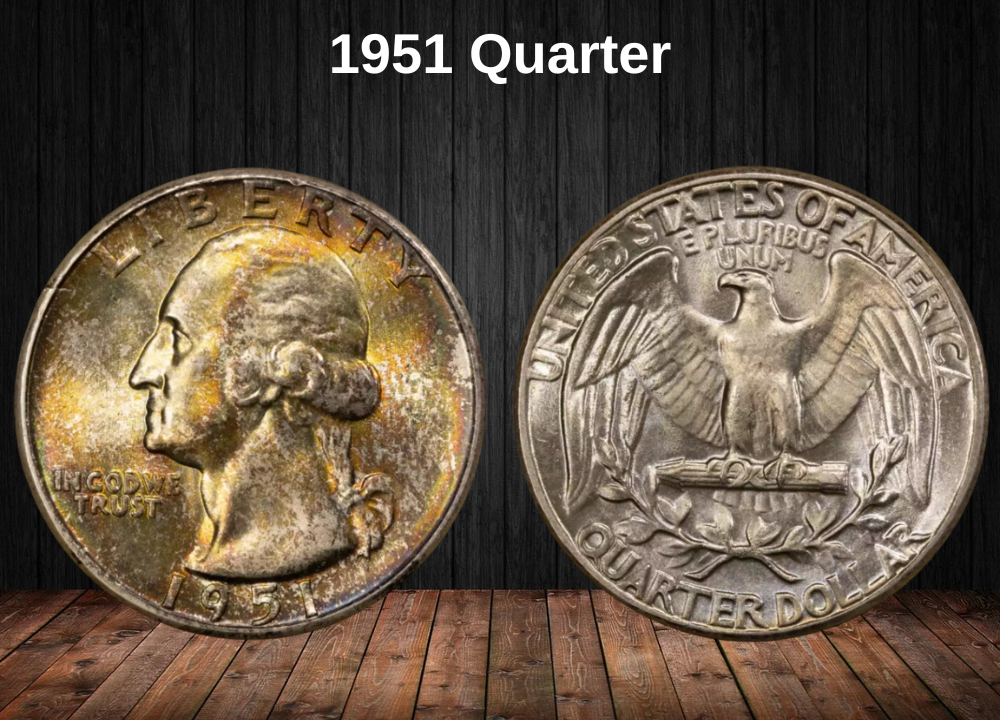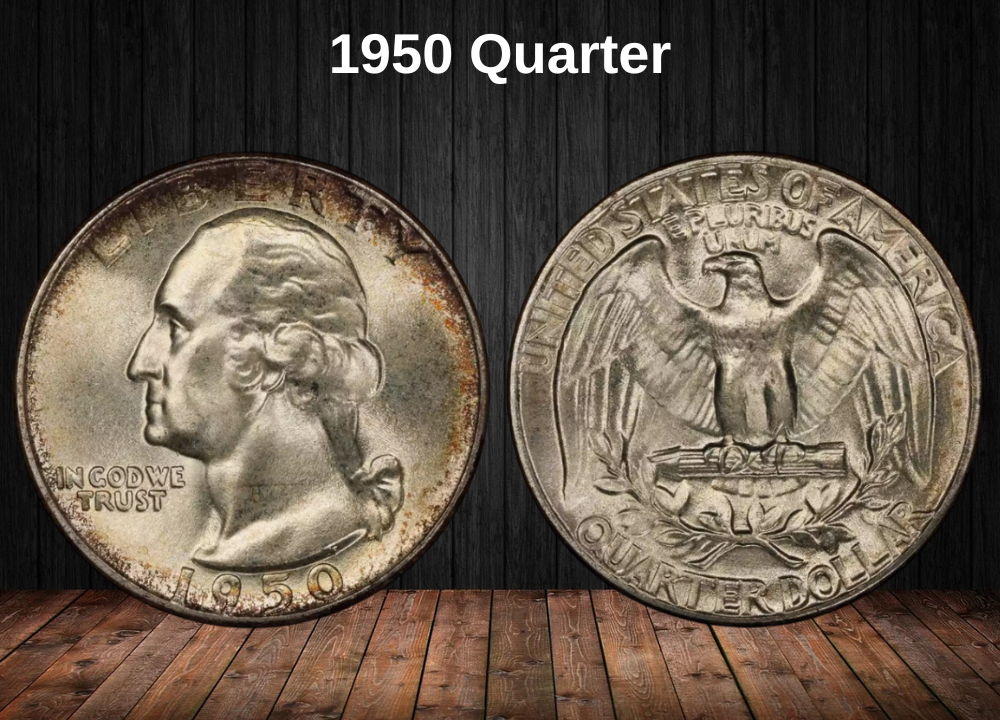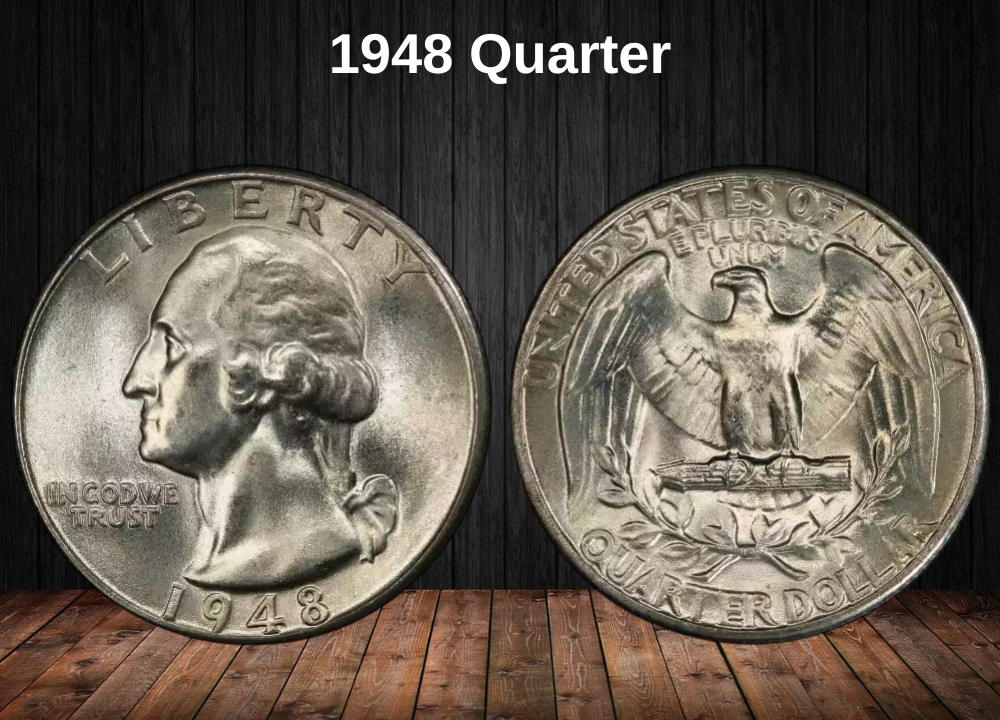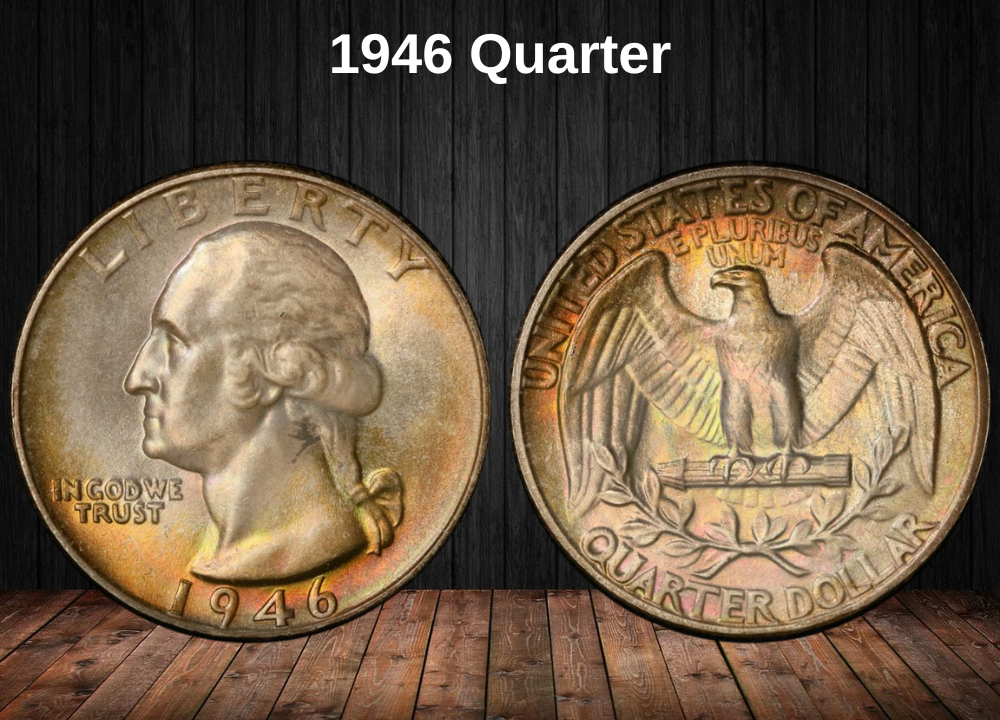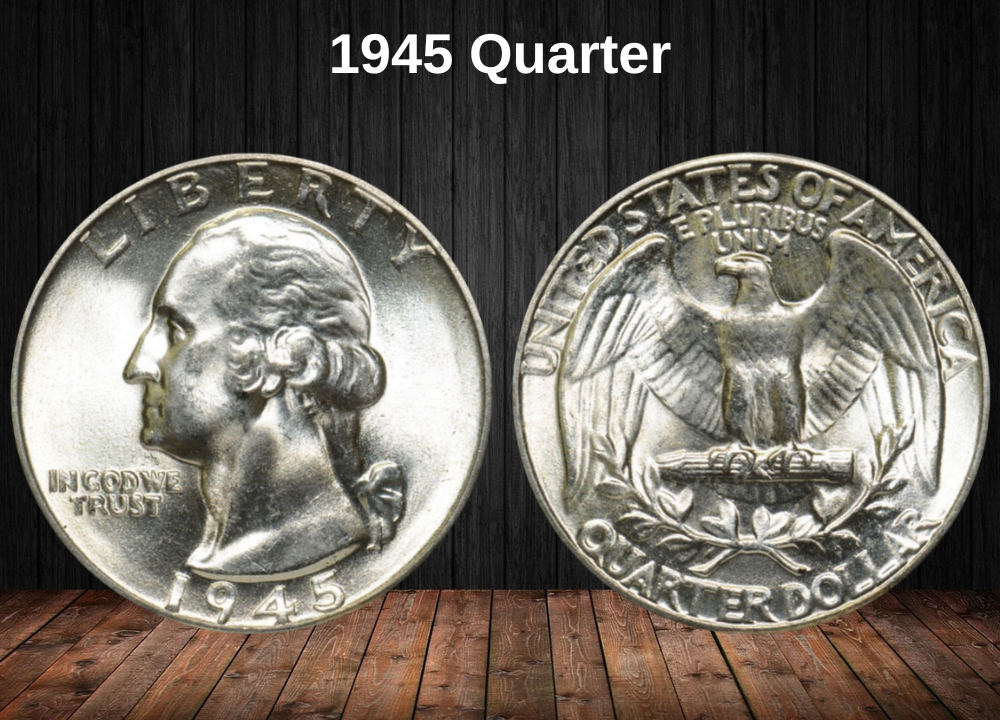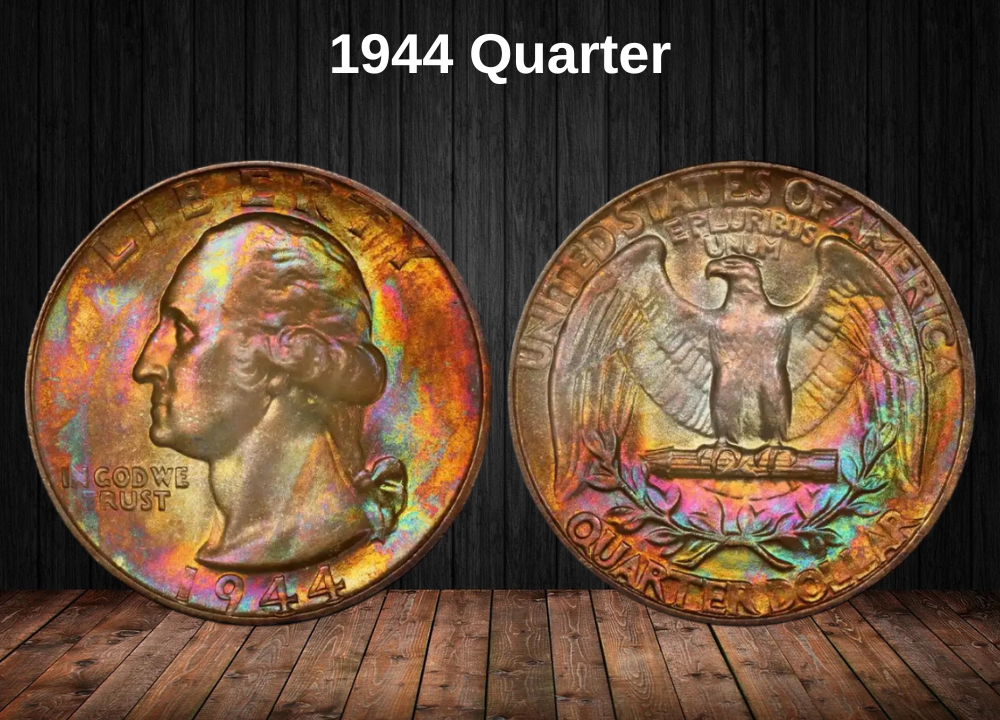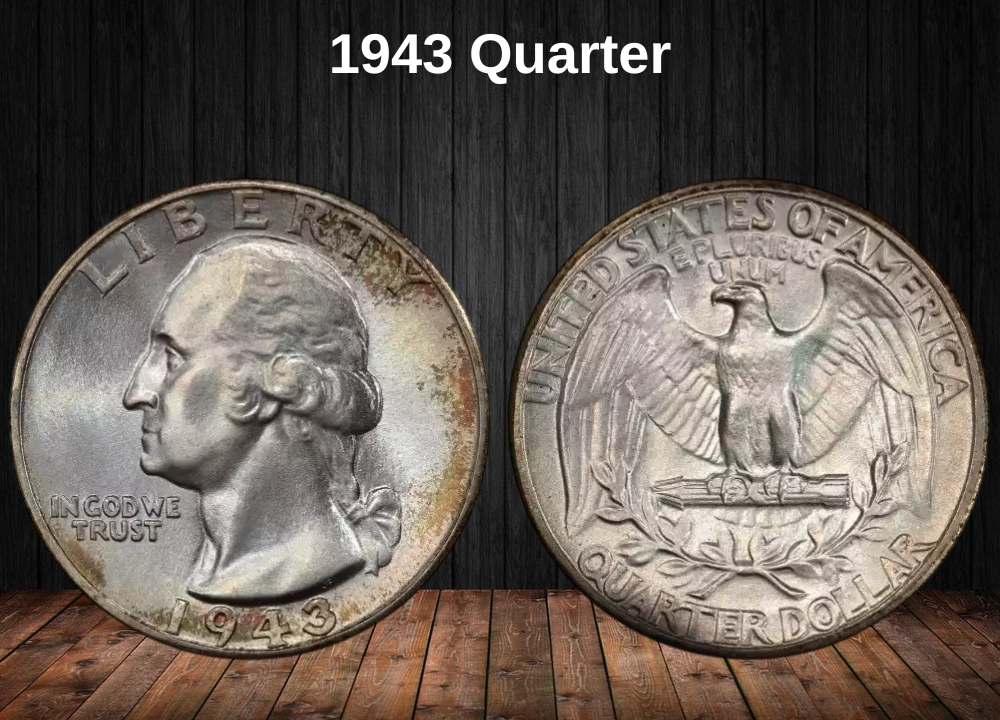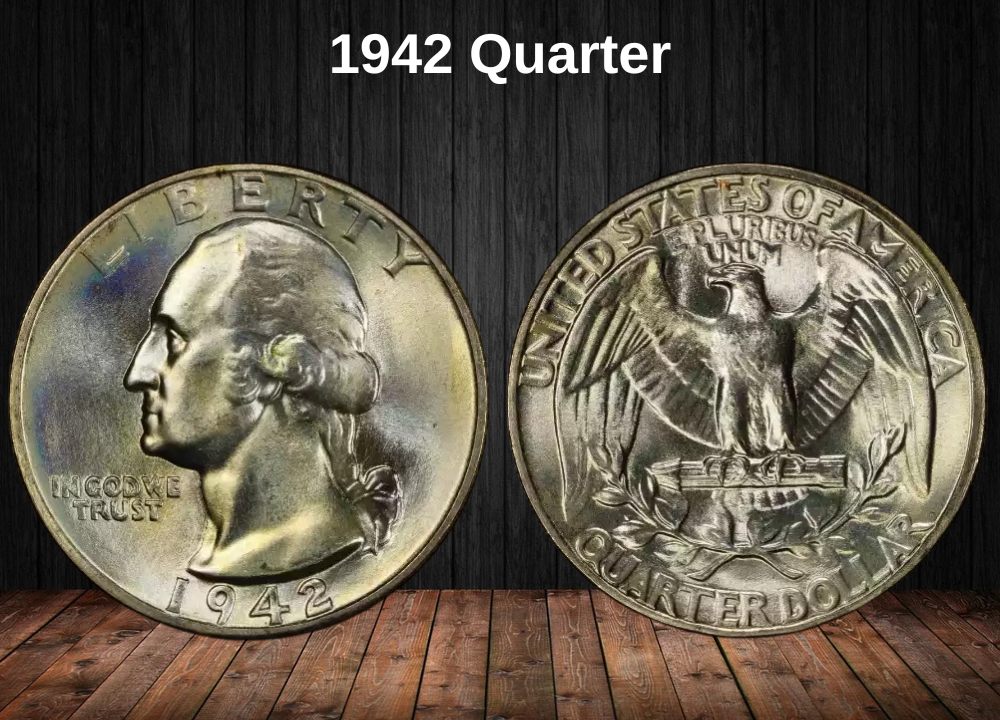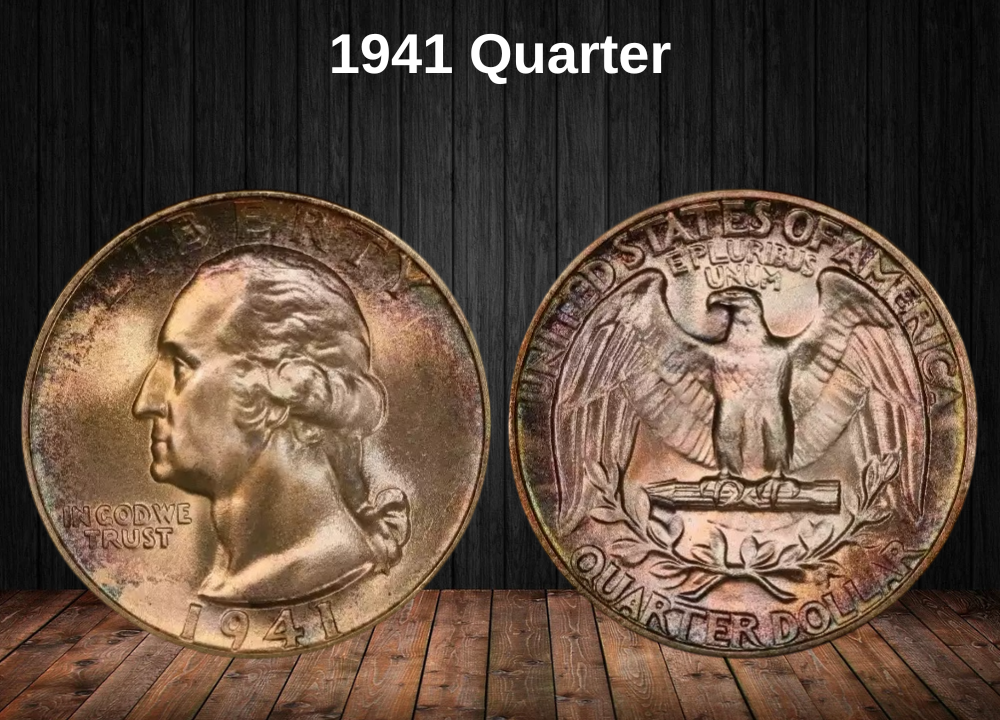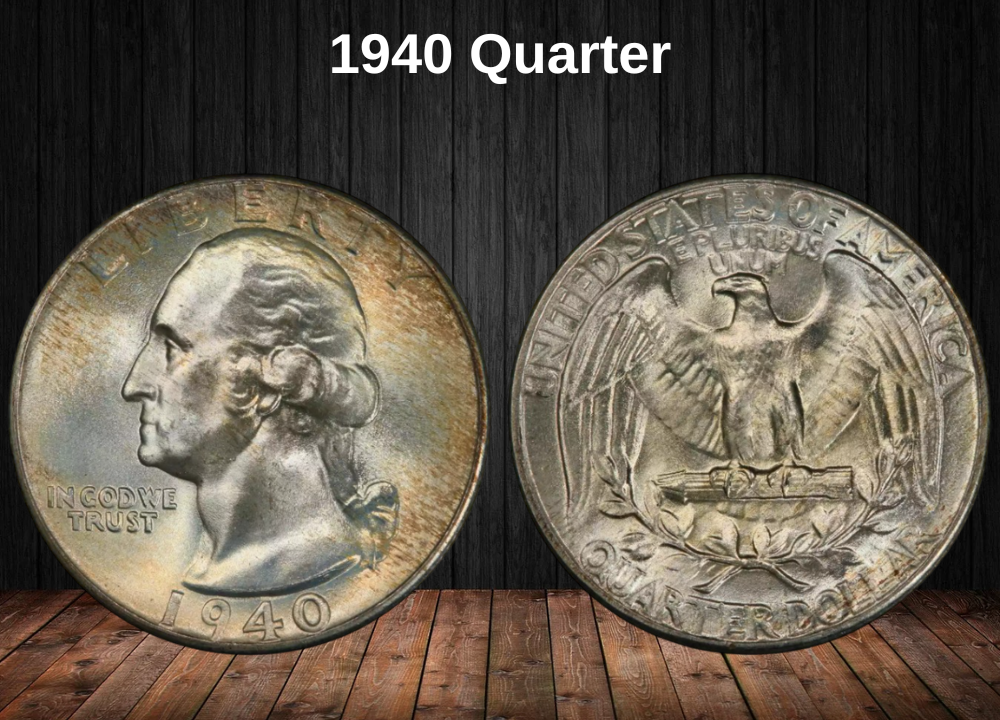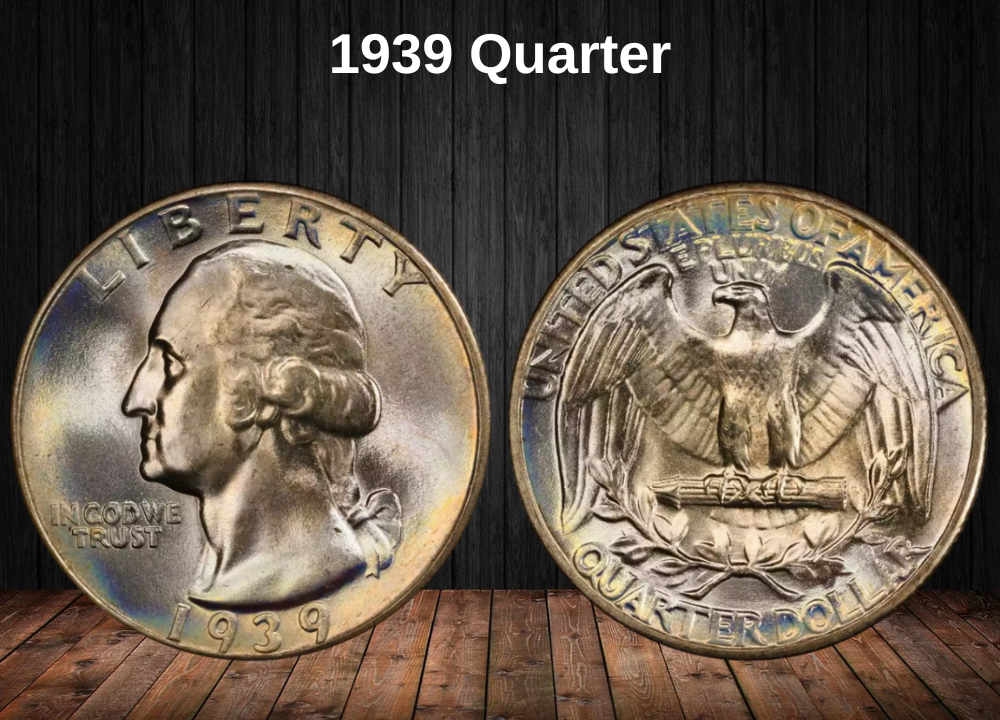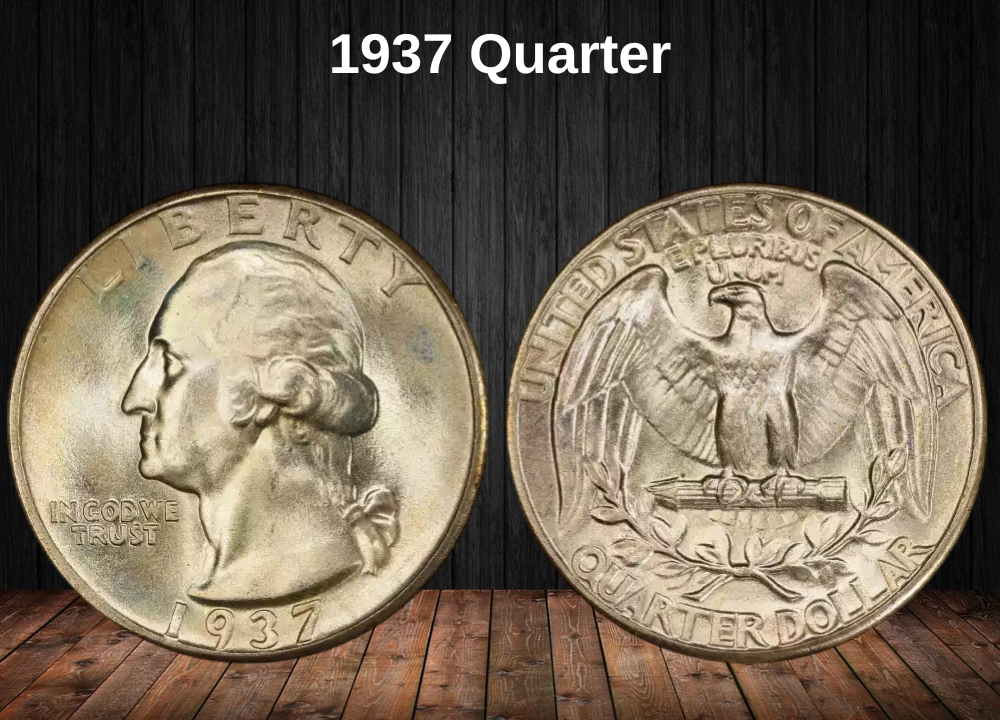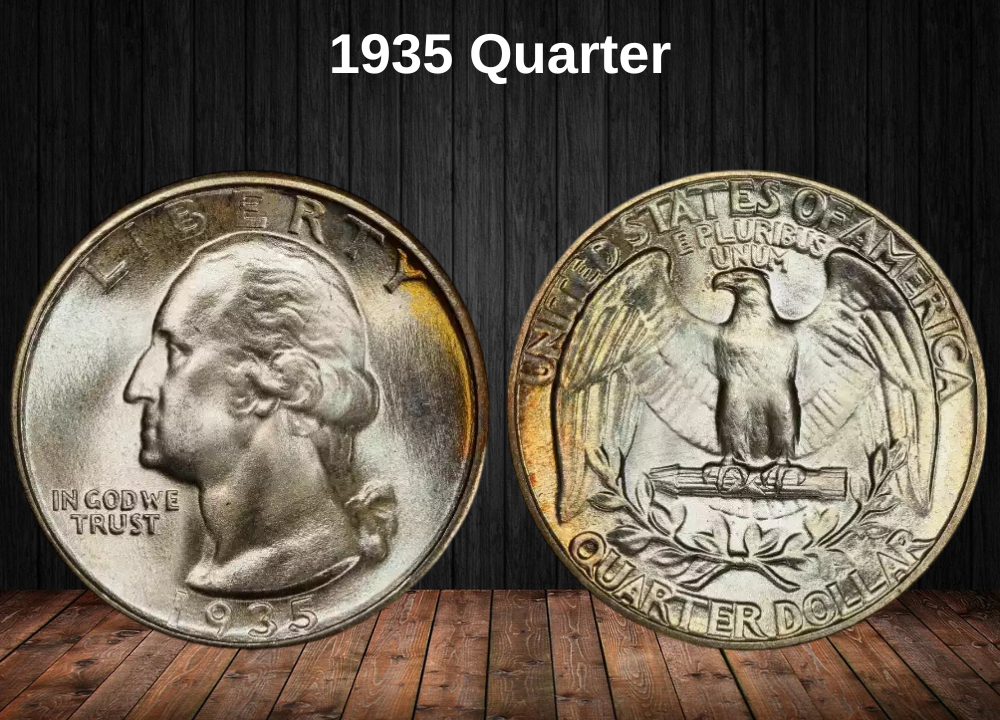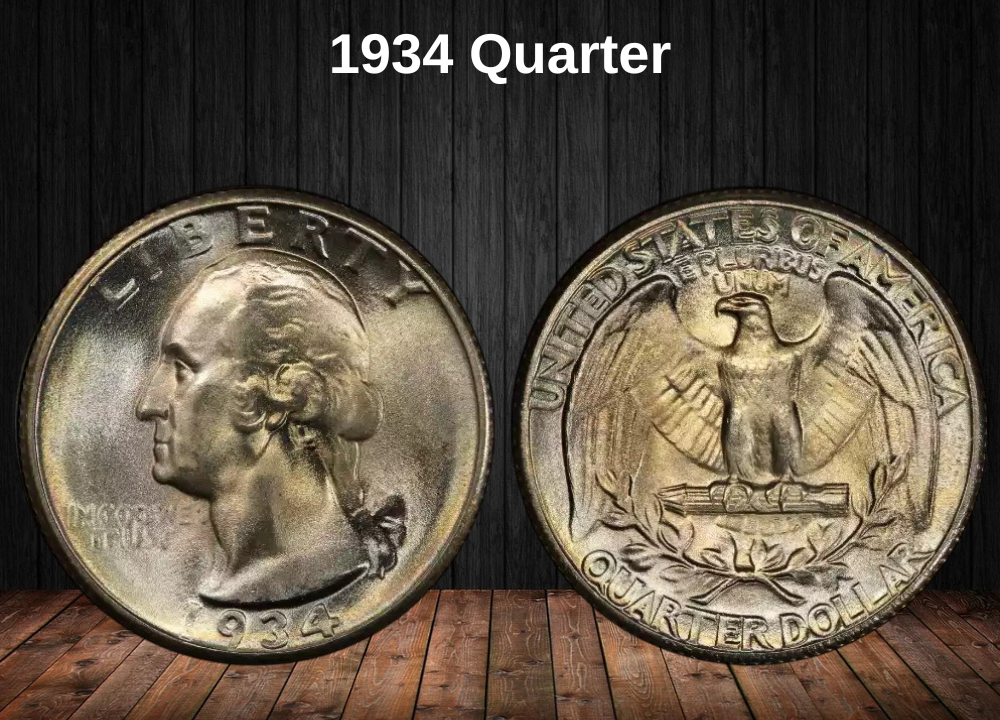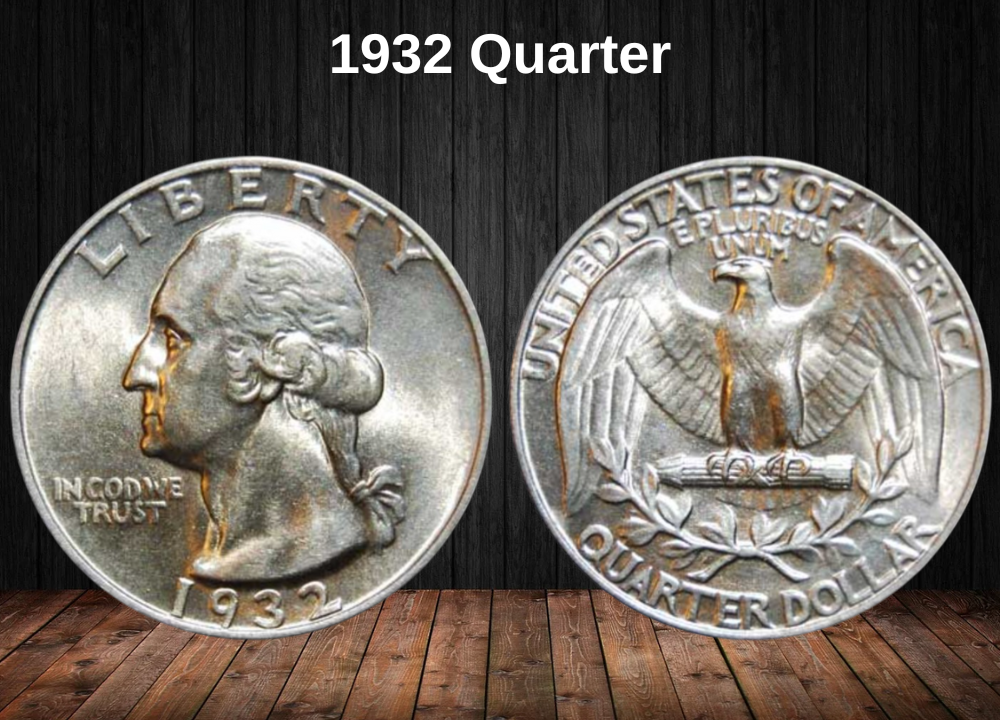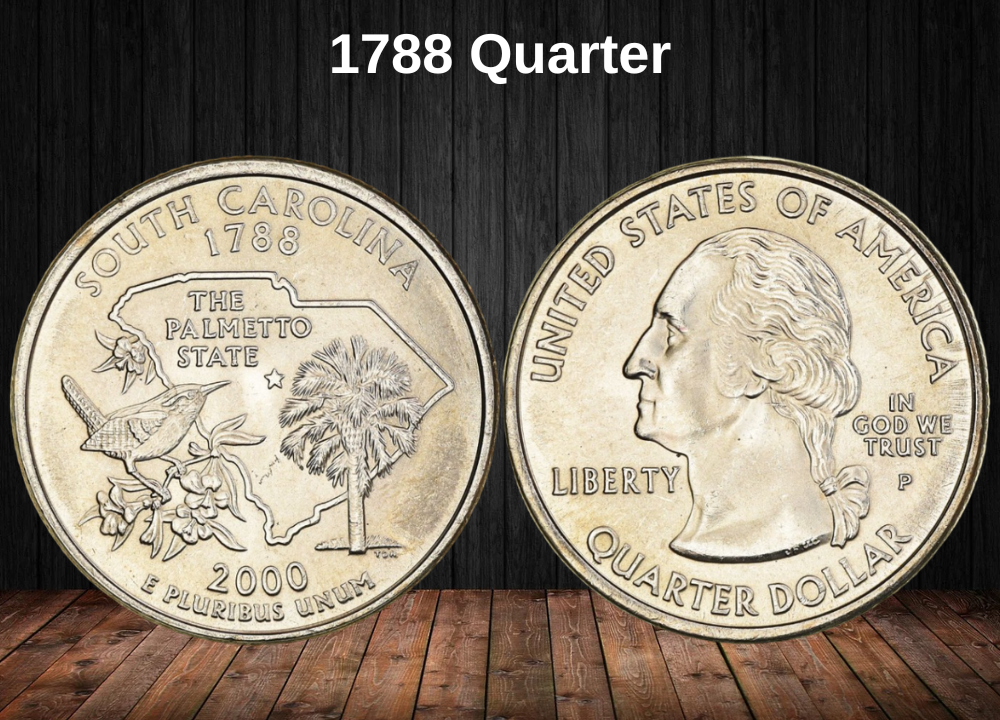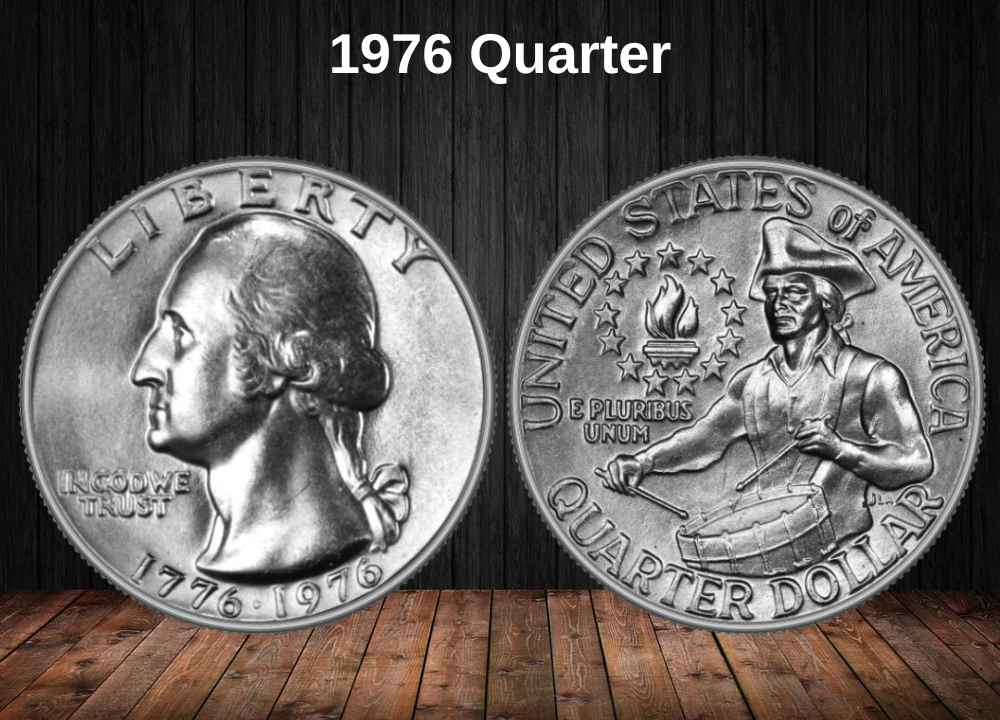The 1959 Washington quarter offers collectors an accessible entry into classic U.S. silver coinage. With more than 85 million coins struck between Philadelphia and Denver, circulation examples remain plentiful, making them attractive for type collectors seeking affordable 90% silver pieces.
Proof production from Philadelphia highlighted the Mint’s advancing technical standards in the late 1950s. Regular proofs start around $23, while Cameo and Deep Cameo proofs—showcasing frosted devices and mirrored fields—command significant premiums. Deep Cameo examples, in particular, are prized for their dramatic contrast and relative scarcity, with average prices exceeding $150.
This wide range of business strikes and proofs makes the 1959 quarter an ideal choice for collectors interested in both silver investment and the artistry of proof coinage.
1959 Quarter Value By Variety
Here’s what your 1959 quarters are worth based on type and condition—from common circulated finds to scarce Deep Cameo proofs that serious collectors pursue:
1959 Quarter Value Chart
| Type | Good | Fine | AU | MS | PR |
|---|---|---|---|---|---|
| 1959 No Mint Mark Quarter Value | $6.00 | $6.17 | $7.00 | $21.83 | — |
| 1959-D Quarter Value | $6.00 | $6.17 | $7.00 | $27.50 | — |
| 1959 Proof Quarter Value | — | — | — | — | $23.33 |
| 1959 CAM Quarter Value | — | — | — | — | $59.40 |
| 1959 DCAM Quarter Value | — | — | — | — | $152.50 |
History of the 1959 Quarter
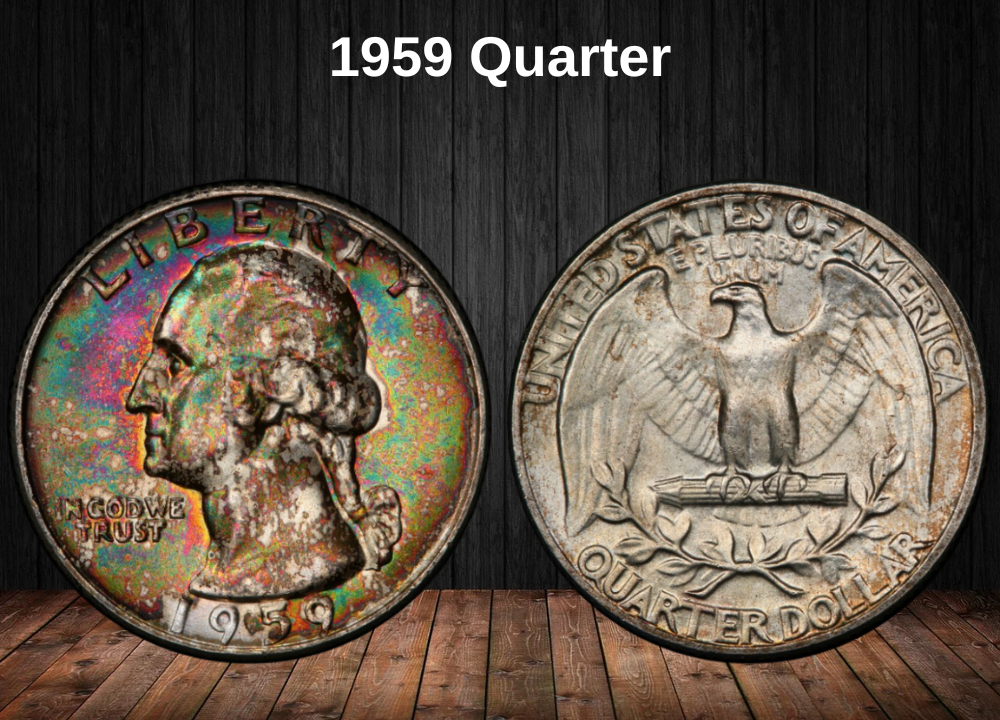
The Washington quarter was originally conceived as a one-year commemorative coin to honor the bicentennial of George Washington’s birth in 1932. Preparations for the celebration began as early as 1924, but real momentum didn’t build until the bicentennial approached.
A design competition was held, and the Bicentennial Committee selected Laura Gardin Fraser’s elegant portrait of Washington. However, Treasury Secretary Andrew Mellon rejected the committee’s choice, instead favoring John Flanagan’s simpler design, which was easier for mass production. Despite appeals to reconsider, Mellon’s successor, Ogden Mills, upheld the decision. Flanagan’s portrait of Washington has since remained a mainstay of U.S. coinage for decades.
By 1959, the Washington quarter had already become a permanent fixture of American money and one of the longest-running coin designs in U.S. history. Struck in 90% silver and 10% copper, these coins represented both the artistry of early 20th-century numismatic design and the enduring respect for the nation’s first president.
Today, quarters from 1959 stand as reminders of the series’ origins and the controversies behind its creation, while also marking the final years of America’s traditional silver coinage before the switch to copper-nickel clad in 1965.
Key Features of the 1959 Quarter
Like all U.S. coins, the Washington quarter went through design and composition changes during its long history. Introduced in 1932 to replace the Standing Liberty quarter, the Washington series maintained a 90% silver, 10% copper composition until the transition to clad coinage in 1965. Quarters struck in 1959 fall squarely within this classic silver era.
The Obverse of the 1959 Quarter
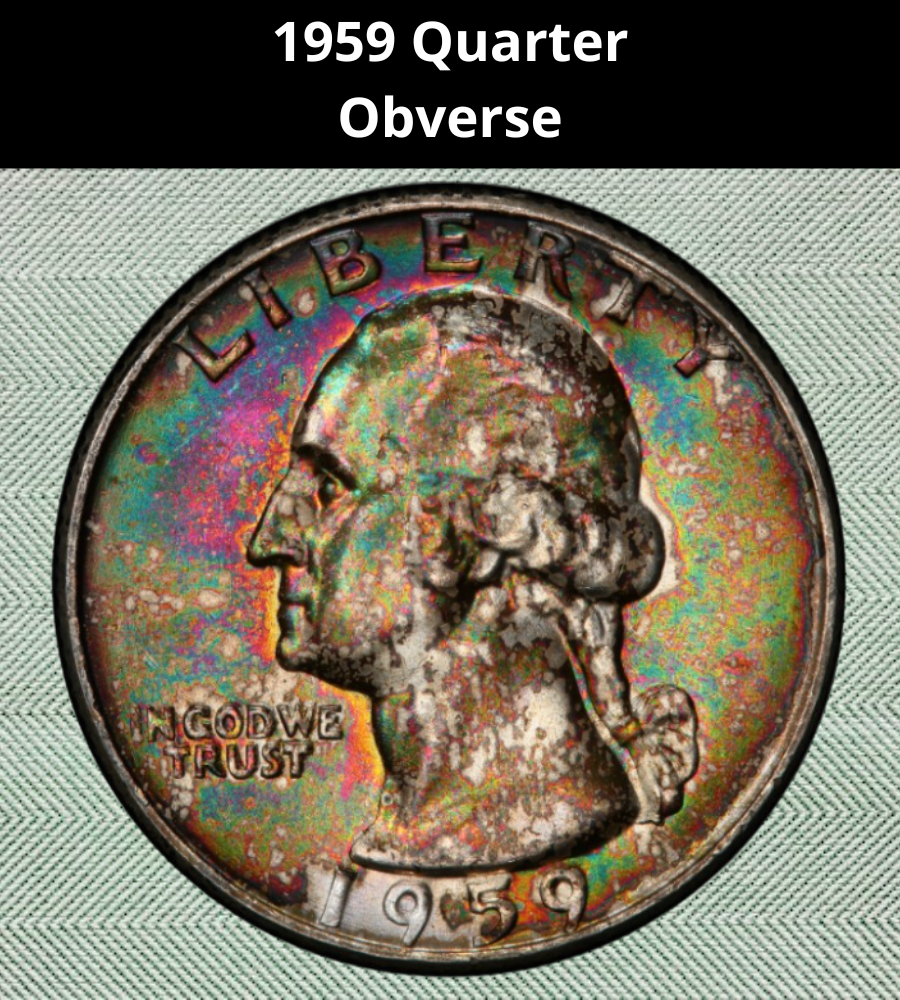
The obverse features George Washington’s left-facing profile, designed by John Flanagan as a tribute to America’s first president. The portrait emphasizes Washington’s strong features and distinctive hairstyle, though the design is more stylized than detailed.
Surrounding the bust are the familiar inscriptions:
- LIBERTY at the top rim
- IN GOD WE TRUST to the left of Washington’s chin
- 1959 centered along the bottom rim
- Flanagan’s initials “JF” discreetly placed at the base of Washington’s neck
The Reverse of the 1959 Quarter
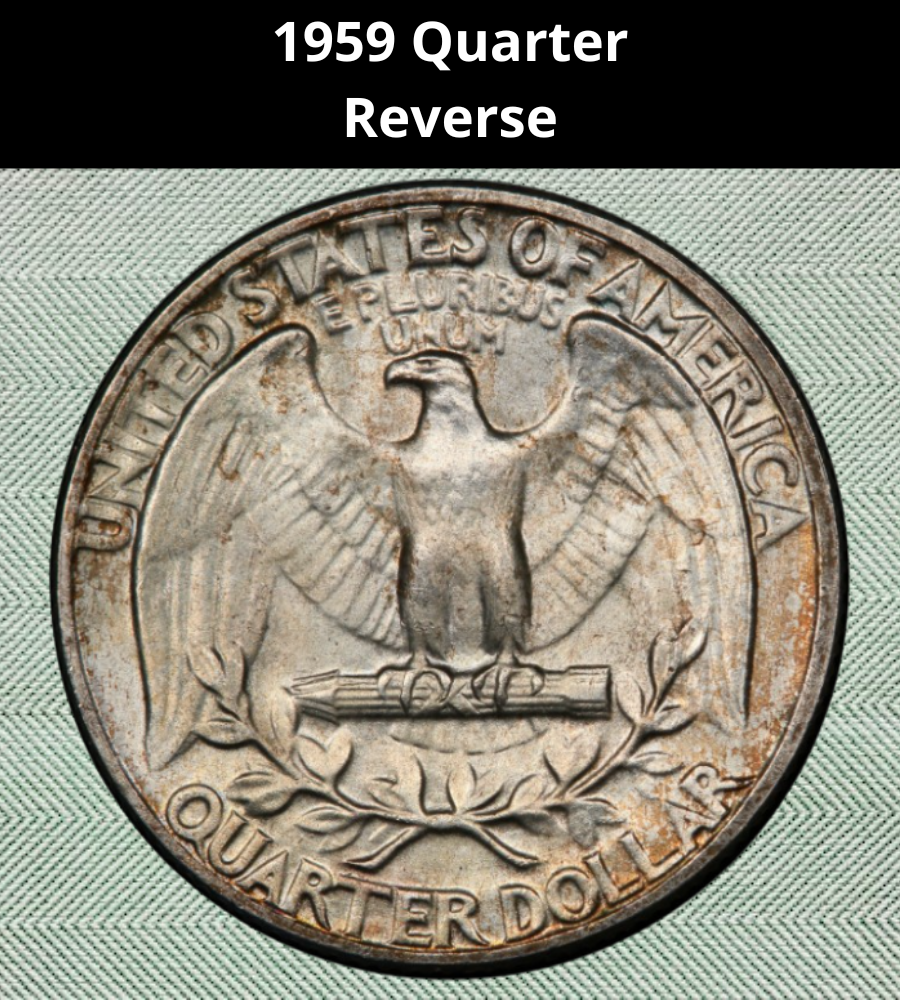
The reverse design presents a bold heraldic composition, rich with national symbolism. At the center, an eagle with outstretched wings grips a bundle of arrows, symbolizing strength and readiness for defense. Below, a pair of crossed olive branches represent peace.
The inscriptions include:
- UNITED STATES OF AMERICA along the top rim
- E PLURIBUS UNUM (“Out of many, one”) just above the eagle’s head
- QUARTER DOLLAR curving along the lower rim
Mint marks, when present, are located on the reverse beneath the olive branches, above the “R” in DOLLAR. Philadelphia coins bear no mint mark, while Denver coins feature a small “D.”
Other Features of the 1959 Quarter
The 1959 quarter maintains the classic specifications of the silver Washington series:
- Composition: 90% silver, 10% copper
- Weight: 6.25 grams (0.20094 ounces)
- Silver Content: 5.62 grams (0.18084 troy ounces)
- Diameter: 24.3 mm (0.95669 inches)
- Thickness: 1.75 mm (0.06889 inches)
- Edge: Reeded with 119 reeds
These features make the 1959 quarter both a collectible piece of American history and a tangible store of silver value.
1959 Quarter Grading
Getting the grade right on your 1959 quarters can make or break their value – and the differences are huge.
Collectors and grading professionals evaluate 1959 quarters by focusing on:
- Washington’s hair details – look closely at the curls above the ear.
- Eagle’s breast feathers – these flatten quickly with circulation.
- Surface preservation – scratches, contact marks, and toning strongly influence grade.
Circulated 1959 quarters in Good to Fine condition remain close to silver melt value (around $6), while About Uncirculated (AU) examples bring only a slight premium. The real jump occurs in Mint State (MS) condition, where well-struck, fully lustrous coins can command $500–$600 or more, especially in higher grades.
For proof coins, grading is even more critical. The difference between a regular Proof and a Deep Cameo (DCAM) isn’t just surface quality but also the strength of contrast between frosted devices and deeply mirrored fields. Since cameo effects often fade or appear inconsistently, accurate grading and designation are essential to determine full market value.
1959 Quarter Grading Guide
| Grade Level | Description | Typical Value Range* |
|---|---|---|
| Good (G-4) | Heavy wear, Washington’s portrait and eagle details mostly flat, rims worn but intact | ~$6 |
| Fine (F-12) | Moderate wear, some hair details and eagle feathers visible, rims clear | ~$6–$7 |
| About Uncirculated (AU-50 to AU-58) | Light friction on high points, most detail intact, partial luster | ~$7–$10 |
| Mint State (MS-60 to MS-65) | No wear, but bag marks/contact marks present; strong luster begins | $40–$250 |
| Gem Mint State (MS-66 to MS-67+) | Sharp strike, full luster, minimal marks; rare in this quality | $500–$600+ |
| Proof (PR-65) | Strong mirrors, some haze or marks possible | ~$23–$40 |
| Cameo Proof (CAM PR-65/66) | Noticeable frosted devices against mirrored fields | ~$55–$120 |
| Deep Cameo Proof (DCAM PR-67/68) | Bold frosted devices, deep mirrors, strong eye appeal; very rare | $150–$300+ |
*Value ranges are approximate and depend on auction performance and silver spot price.
1959 Quarter Value Guides
1959 No Mint Mark Quarter Value
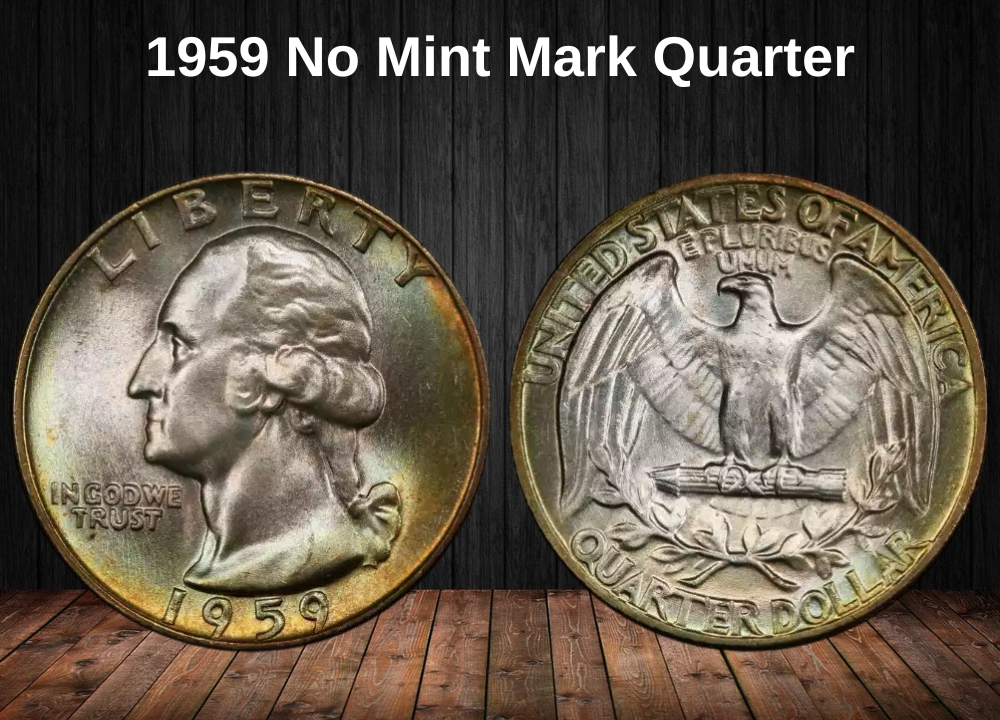
The 1959 No Mint Mark quarter, struck at the Philadelphia Mint, occupies a fascinating place in Washington quarter collecting. What sets this variety apart is its extreme grade sensitivity—while most circulated examples trade for little more than silver melt value, pristine Mint State coins can achieve exponential premiums.
This steep price curve makes the 1959 Philadelphia quarter one of the most volatile issues in the series, with market demand and strike quality playing major roles in determining value. Collectors pursuing registry-quality sets are especially aggressive when top-graded examples appear at auction.
1959 No Mint Mark Quarter Price/Grade Chart
Price by 1-70 Grade (Latest Auction Records Included)
| Date | Auction House | Price | Grade |
|---|---|---|---|
| 11/24 | HA | $2,040 | 67 |
| 06/24 | HA | $3,120 | 67 |
| 05/24 | HA | $1,984 | 67 |
| 03/23 | DL | $25 | 64 |
| 12/22 | HA | $660 | 67 |
| 09/22 | DL | $35 | 65 |
| 08/22 | HA | $1,620 | 67 |
| 07/22 | DL | $25 | 65 |
| 06/22 | DL | $25 | 65 |
| 06/22 | SB | $384 | 67 |
1959-D Quarter Value
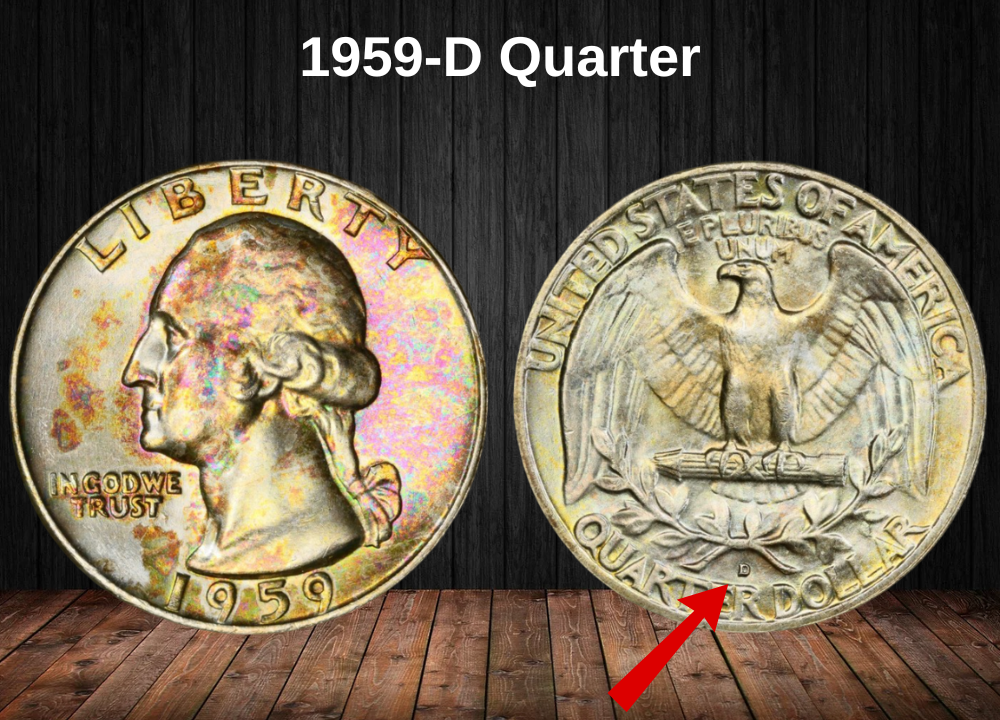
The 1959-D quarter represents Denver’s substantial contribution to Washington quarter production, with over 62 million coins struck—the highest mintage variety of that year.
Despite its abundance, the 1959-D displays the same grade-driven value curve as its Philadelphia counterpart: circulated examples hover close to silver melt value, but gem Mint State coins command exponential premiums. Collectors place strong emphasis on strike quality and surface preservation, as Denver coins are generally better struck but still show wide variability in condition rarity.
The identifying “D” mint mark is found on the reverse, just below the eagle’s tail feathers and above the word “QUARTER DOLLAR.”
1959-D Quarter Price/Grade Chart
Price by 1-70 Grade (Latest Auction Records Included)
| Date | Auction House | Price | Grade |
|---|---|---|---|
| 04/25 | SB | $480 | 67 |
| 01/24 | HA | $288 | 67 |
| 11/23 | LM | $1,821 | 67 |
| 06/23 | HA | $372 | 67 |
| 05/23 | HA | $264 | 66 |
| 11/22 | HA | $720 | 67 |
| 08/22 | HA | $432 | 66 |
| 07/22 | DL | $30 | 65 |
| 06/22 | SB | $660 | 67 |
| 05/22 | HA | $240 | 67 |
1959 Proof Quarter Value
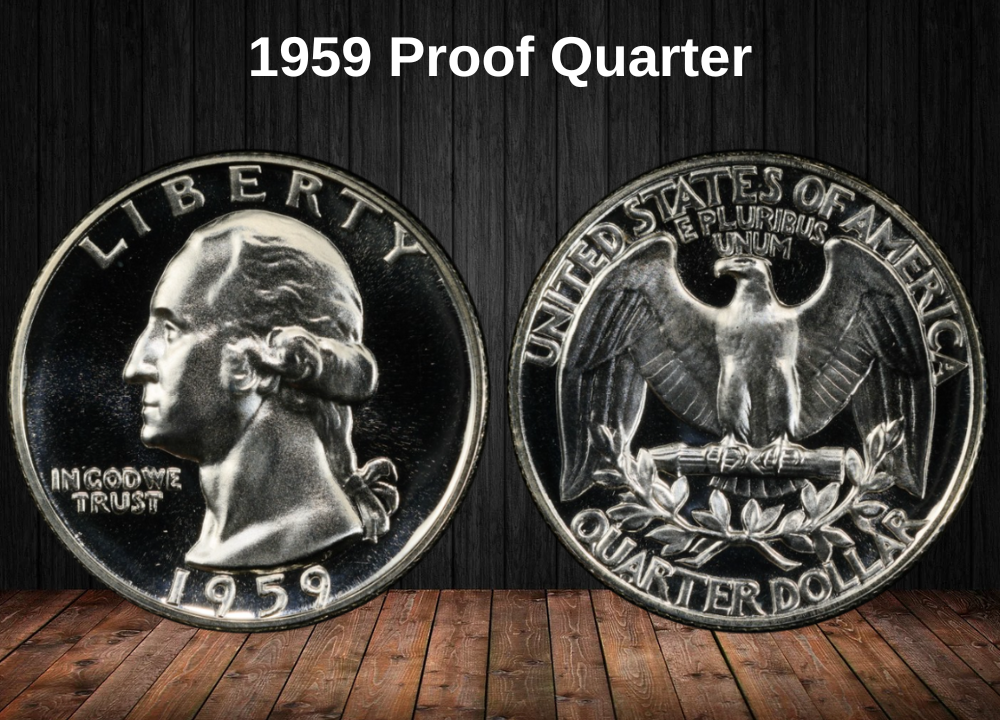
The 1959 Proof quarter was struck at the Philadelphia Mint exclusively for collectors as part of the annual proof set program. Produced using specially polished dies and planchets, these coins display mirror-like fields and sharp strike detail far superior to regular circulation strikes.
With a mintage of over 1.1 million pieces, the 1959 Proof quarter ranks among the more available proof issues of the 1950s. Careful handling at the Mint and by collectors has ensured a high survival rate, meaning most examples exist today in relatively pristine condition.
Unlike business strikes, proof quarters generally show a flatter price curve across the grades, since most were preserved well from the beginning. As a result, their values tend to reflect collector demand for contrast quality (Cameo and Deep Cameo) rather than rarity in high grades.
1959 Proof Quarter Price/Grade Chart
Price by 1-70 Grade (Latest Auction Records Included)
| Date | Auction House | Price | Grade |
|---|---|---|---|
| 08/23 | HA | $129 | 69 |
| 08/23 | SB | $100 | 67 |
| 05/23 | HA | $69 | 69 |
| 10/21 | HA | $94 | 69 |
| 05/21 | HA | $104 | 69 |
| 05/21 | DL | $26 | 66 |
| 05/21 | HA | $89 | 69 |
| 08/19 | DL | $20 | 66 |
| 08/18 | DL | $40 | 68 |
| 03/17 | HA | $69 | 67 |
1959 CAM Quarter Value
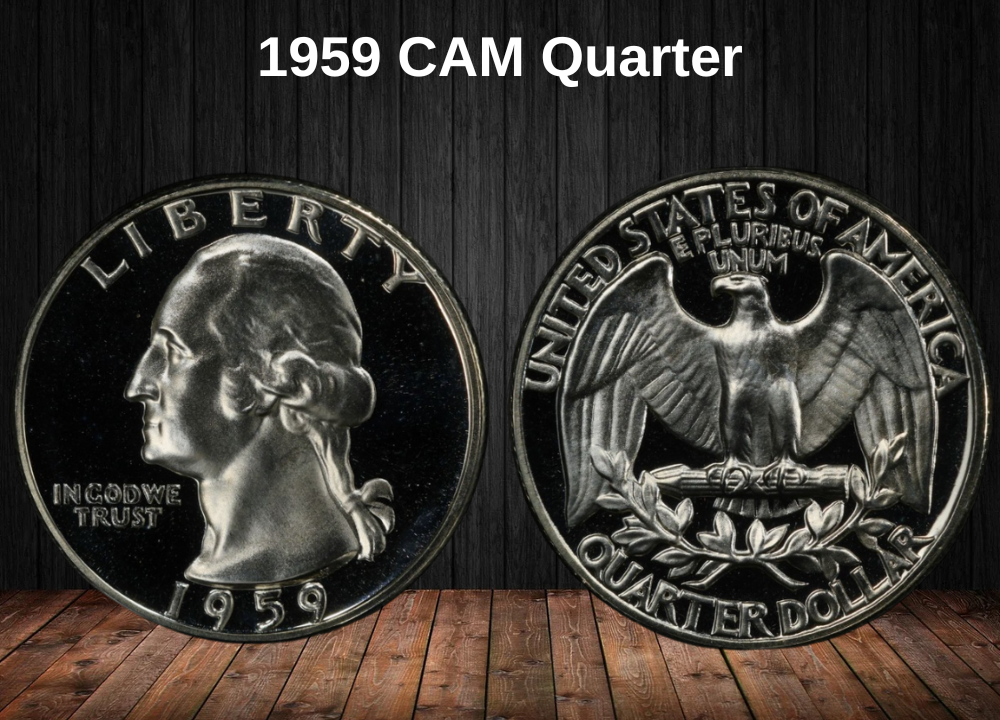
The 1959 CAM (Cameo) quarter belongs to a distinctive subset of proof Washington quarters that display frosted design elements contrasting sharply against deeply mirrored fields. This effect, produced by freshly prepared dies, creates a bold three-dimensional appearance where Washington’s portrait and the eagle stand out vividly from the reflective backgrounds.
To qualify for Cameo designation, the coin must exhibit consistent frost across the raised devices, with noticeable contrast visible even to the naked eye. While all 1959 proofs began with some level of contrast, only a fraction survived with sufficient preservation to earn the CAM classification. From the original proof mintage, an estimated 195,000 coins (about 17%) qualify today, placing them between regular proofs and the far scarcer DCAM specimens in rarity.
1959 CAM Quarter Price/Grade Chart
Price by 1-70 Grade (Latest Auction Records Included)
| Date | Auction House | Price | Grade |
|---|---|---|---|
| 09/24 | SB | $145 | 68 |
| 06/23 | HA | $77 | 68 |
| 11/22 | HA | $69 | 68 |
| 06/22 | HA | $71 | 68 |
| 11/21 | SB | $40 | 67 |
| 11/20 | HA | $133 | 68 |
| 07/20 | HA | $408 | 69 |
| 05/19 | HA | $79 | 68 |
| 01/19 | HA | $336 | 69 |
| 10/18 | DL | $51 | 67 |
1959 DCAM Quarter Value
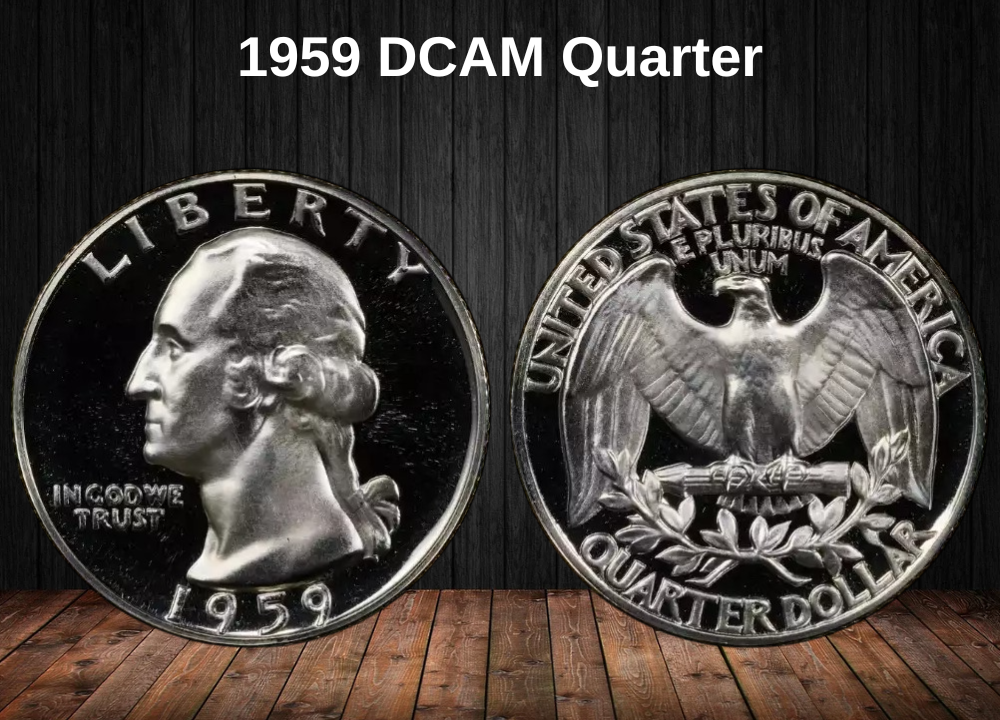
The 1959 DCAM (Deep Cameo) quarter represents the ultimate expression of proof craftsmanship in the Washington quarter series. These coins exhibit maximum contrast between deeply frosted design elements and mirror-like fields, producing a bold black-and-white effect highly prized by collectors.
DCAM designation requires flawless preservation of the frost on Washington’s portrait and the heraldic eagle, with no fading or breaks in the contrast. Only the very first strikes from freshly polished dies achieved this dramatic appearance.
With just 36,000 surviving examples (roughly 3% of the original proof mintage), the 1959 DCAM stands as the rarest and most visually striking proof variety of the year, making it a condition rarity that commands substantial premiums.
1959 DCAM Quarter Price/Grade Chart
Price by 1-70 Grade (Latest Auction Records Included)
| Date | Auction House | Price | Grade |
|---|---|---|---|
| 08/23 | HA | $564 | 69 |
| 07/23 | SB | $312 | 68 |
| 06/23 | HA | $456 | 68 |
| 04/22 | DL | $228 | 67 |
| 11/21 | SB | $288 | 68 |
| 05/21 | HA | $720 | 69 |
| 08/20 | HA | $840 | 69 |
| 02/19 | SB | $156 | 67 |
Rare 1959 Quarter Error List
1. 1959-D RPM FS-501
The 1959-D RPM (Repunched Mint Mark) FS-501 is one of the most recognized Denver varieties of the year. This error occurs when the “D” mint mark was punched into the working die more than once, but in slightly different positions, leaving a shadowed or doubled appearance.
On well-preserved examples, the secondary impression is clearly visible under magnification, typically appearing as doubling at the edges of the “D.” While RPMs were fairly common during this period due to the manual mint mark punching process, the FS-501 variety is distinct enough to be officially cataloged and actively collected.
Although not considered a major rarity, its appeal lies in the fact that it adds affordable variety potential to a 1959-D collection, especially when found in higher grades where the doubling is sharpest.
1959-D RPM FS-501 Price/Grade Chart
Price by 1-70 Grade (Latest Auction Records Included)
| Date | Auction House | Price | Grade |
|---|---|---|---|
| 07/24 | HA | $144 | 66 |
| 06/23 | SB | $65 | 65 |
| 05/23 | HA | $84 | 65 |
| 11/22 | DL | $40 | 64 |
| 08/22 | HA | $192 | 66 |
| 05/21 | SB | $55 | 65 |
2. 1959 DDO FS-101
The 1959 Doubled Die Obverse (DDO) FS-101 is one of the most dramatic proof varieties of the Washington quarter series. This error occurred when the obverse die received an additional, misaligned impression during hubbing, resulting in noticeable doubling across Washington’s portrait and surrounding legends.
The doubling is most visible in “LIBERTY,” the date “1959,” and parts of “IN GOD WE TRUST.” On high-grade examples, the doubled devices show crisp separation rather than simple strike doubling, making attribution straightforward with proper magnification.
Since this variety only appears on proof strikes, it is significantly scarcer than business-strike errors. Collectors especially prize Cameo (CAM) and Deep Cameo (DCAM) examples where the doubled features stand out even more against the frosted devices and mirrored fields.
1959 Proof DDO FS-101 Price/Grade Chart
Price by 1–70 Grade (Latest Auction Records Included)
| Date | Auction House | Price | Grade | Notes |
|---|---|---|---|---|
| 04/24 | SB | $228 | PR66 | Standard Proof |
| 08/23 | HA | $192 | PR65 | Strong doubling |
| 03/22 | DL | $144 | PR65 | Early sale |
| 07/21 | HA | $276 | PR66 | Premium result |
1959 CAM DDO FS-101 Price/Grade Chart
Price by 1–70 Grade (Latest Auction Records Included)
| Date | Auction House | Price | Grade | Notes |
|---|---|---|---|---|
| 01/25 | SB | $360 | PR67CAM | Scarce cameo |
| 09/23 | HA | $276 | PR66CAM | Moderate frost |
| 06/22 | HA | $312 | PR67CAM | Strong contrast |
| 02/21 | DL | $240 | PR66CAM | Collector interest rising |
Where to Sell Your Quarter Coin?
Now that you know the value of your quarter, the next step is deciding where to sell it. There are several trusted options—both online and in person—that can help you get the best price depending on your coin’s rarity and condition.
To see the full list of recommended places, along with their advantages and disadvantages, check our complete guide on where to sell your quarter coins.
FAQ About the 1959 Washington Quarter
1. Why is the 1959 Quarter significant to collectors?
The 1959 Washington Quarter, struck in 90% silver, represents the end of the 1950s era of U.S. coinage. While it’s not a rare date, it’s popular with collectors who build full sets of pre-1965 silver quarters.
2. Which mints produced the 1959 Quarter?
It was struck at two mints: Philadelphia (no mint mark) and Denver (“D”). No San Francisco quarters were minted in 1959, which simplifies the set for that year.
3. Are there notable varieties or errors for the 1959 Quarter?
Yes. The most collectible are Repunched Mintmarks (RPMs) on Denver issues and occasional Doubled Die Obverses (DDOs). Error coins such as off-center strikes, broadstrikes, and clipped planchets are also sought after by specialists.
4. How much is a 1959 Quarter worth today?
Circulated examples typically sell for $5–$15, close to silver melt value. Mint State coins (MS65) range from $75–$200, while superb gems (MS67+) can exceed $1,000. Rare RPMs or DDOs in high grade may reach several thousand dollars.
5. What should collectors look for in a 1959 Quarter?
Collectors should focus on Denver issues for mintmark varieties. Strong strikes with sharp details in Washington’s hair and the eagle’s feathers are the most desirable. Coins with full luster and no signs of cleaning are premium pieces, and certification from PCGS or NGC is advised for high-grade or error examples.

